
Living in a wildlife corridor, I’m in a high-traffic deer zone.
There are many reasons to avoid attracting wild animals to our gardens and blooming backyards.
Not only are deer destructive in the vegetable and flower gardens but they are also at risk of getting killed on roadways and railways in addition to causing traffic accidents.
Are Deer Grazing What You’re Raising?
From decapitated tulips to devoured cabbages, deer cause distress and destruction for gardeners.
Deer have amazing memories. Moreover, they are skilled at sharing and gossiping with their friends.
Once deer have marked your garden on their map of food sources, they won’t be afraid to visit over and over again.
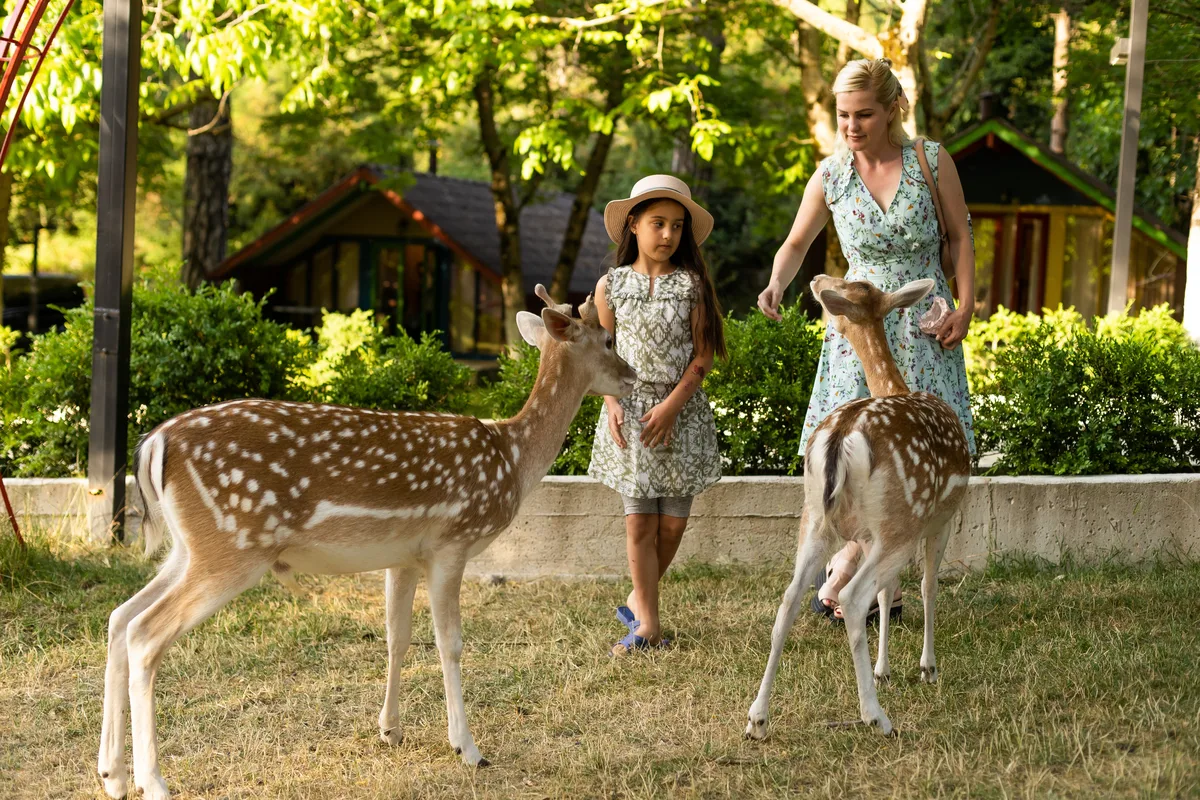
The Unwelcomed Deer Plan
Avoid Letting Your Garden Become a Deer Buffet
Fruit and nut trees can either be picked thoroughly and cleanly or avoided altogether.
Shun plants that deer love such as tulips, arborvitae, roses, dogwood, yew, pansies, and hostas.
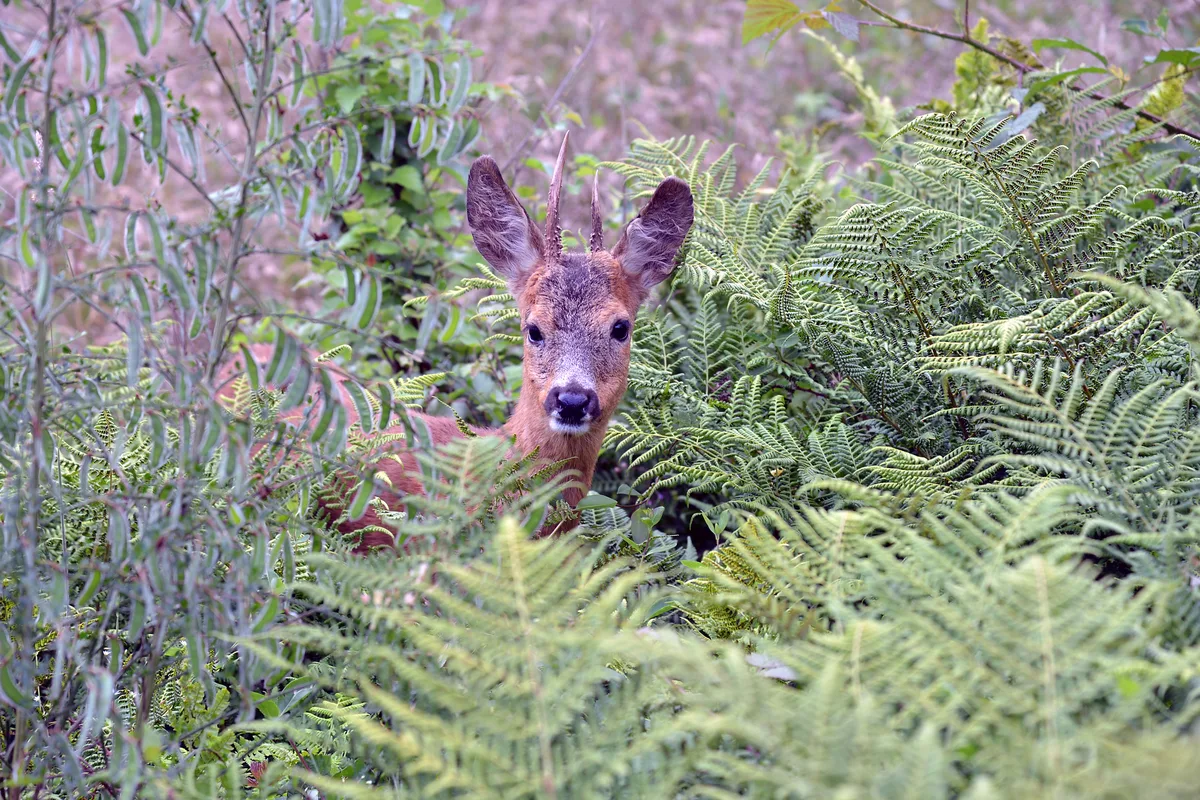
Deer will scout for food sources and, incredibly, they will return later in the season.
Make fall cleanup a top priority. Clean up as much edible debris, like overwintering kale, as possible.
Discourage Garden-Visiting Deer.
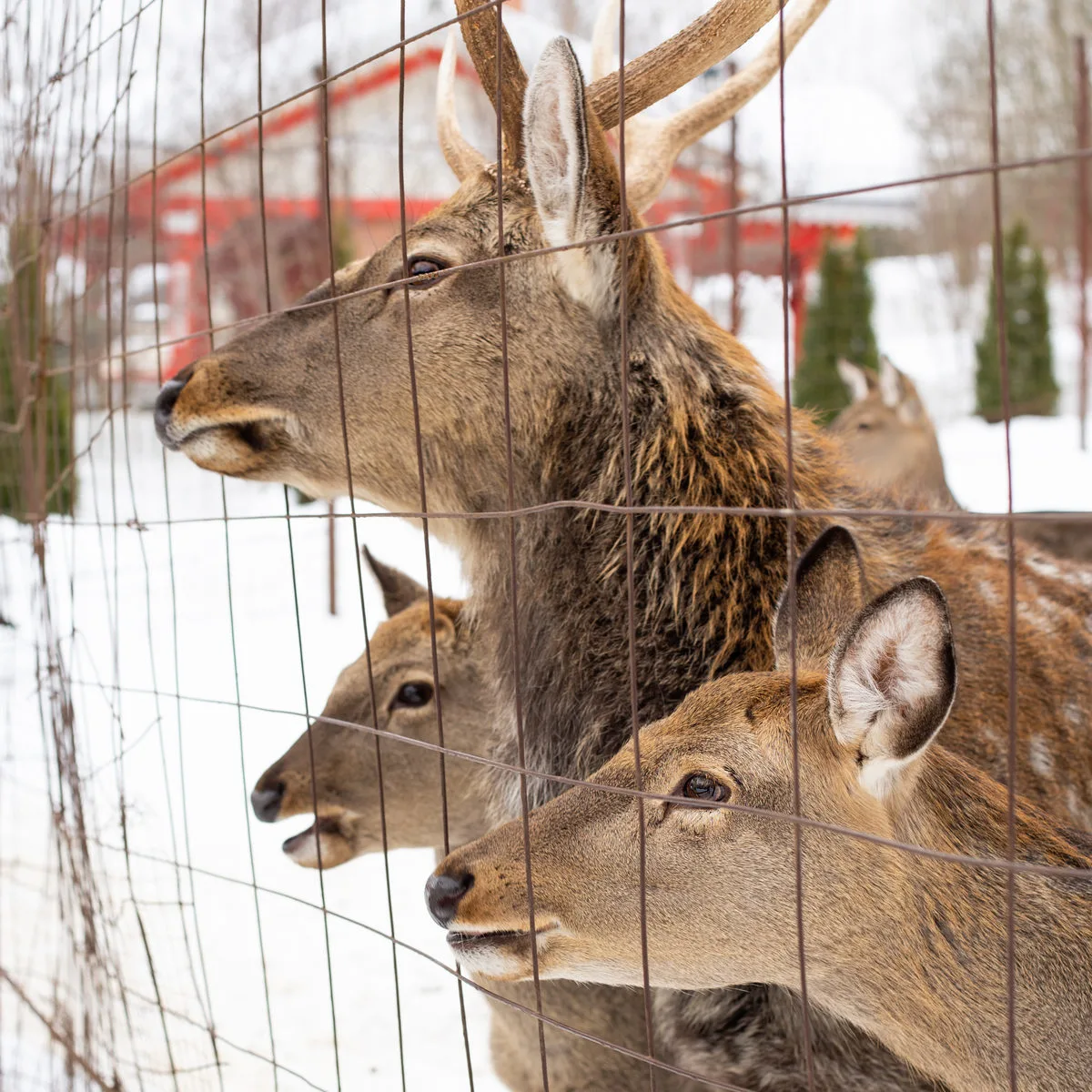
Tall fences and repellents are a great way to discourage deer.
High jumpers, deer fences need to be over 7 feet tall.
A wide variety of commercial and DIY deer repellents are available.
My go-to deer repellent is sprinkling blood meal, a soil amendment, throughout the garden. Deer detest it.
Motion sensor lighting and water sprinklers are an option to deter determined deer.
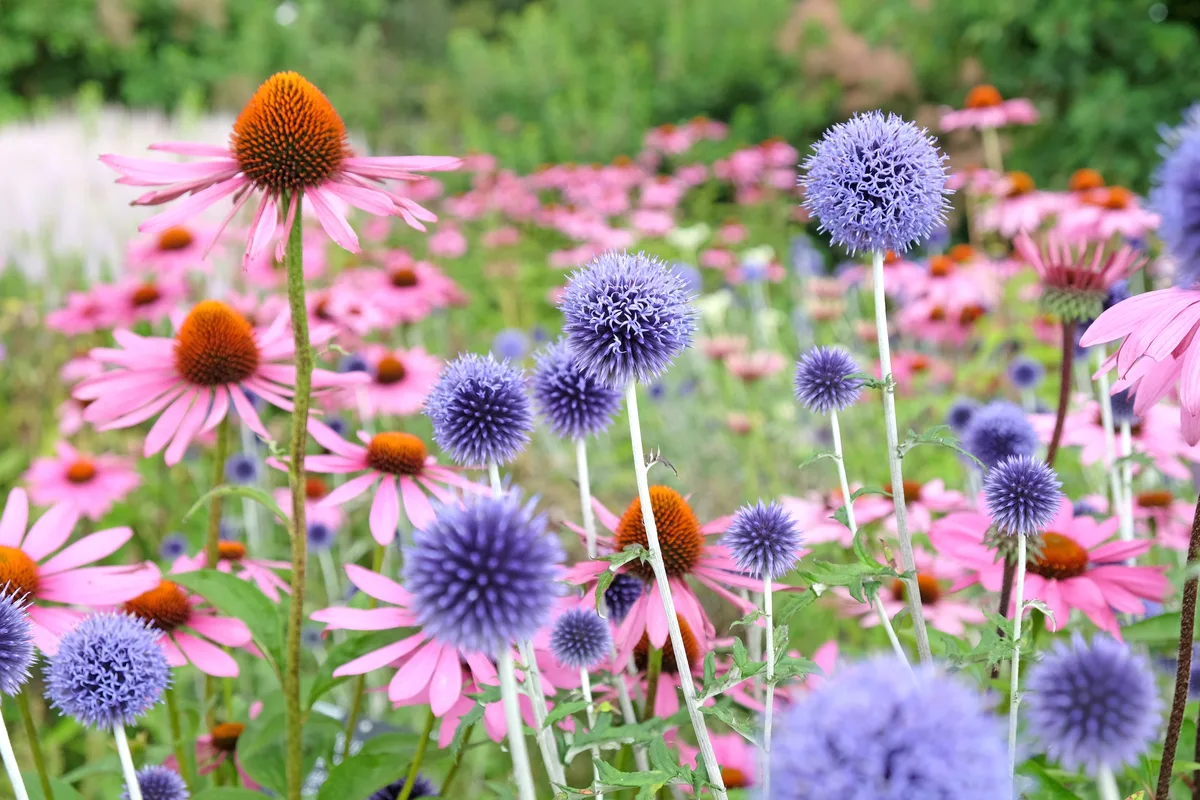
Plant a Plethora of Deer Resistant Perennial Flowers
Myself, I refuse to garden in a cage or inside tall fences, so I use deer-resistant perennials instead.
With the above tips, it works amazing. Additionally, I avoid encouraging four-legged visitors from risking their lives crossing roads to get to my garden.
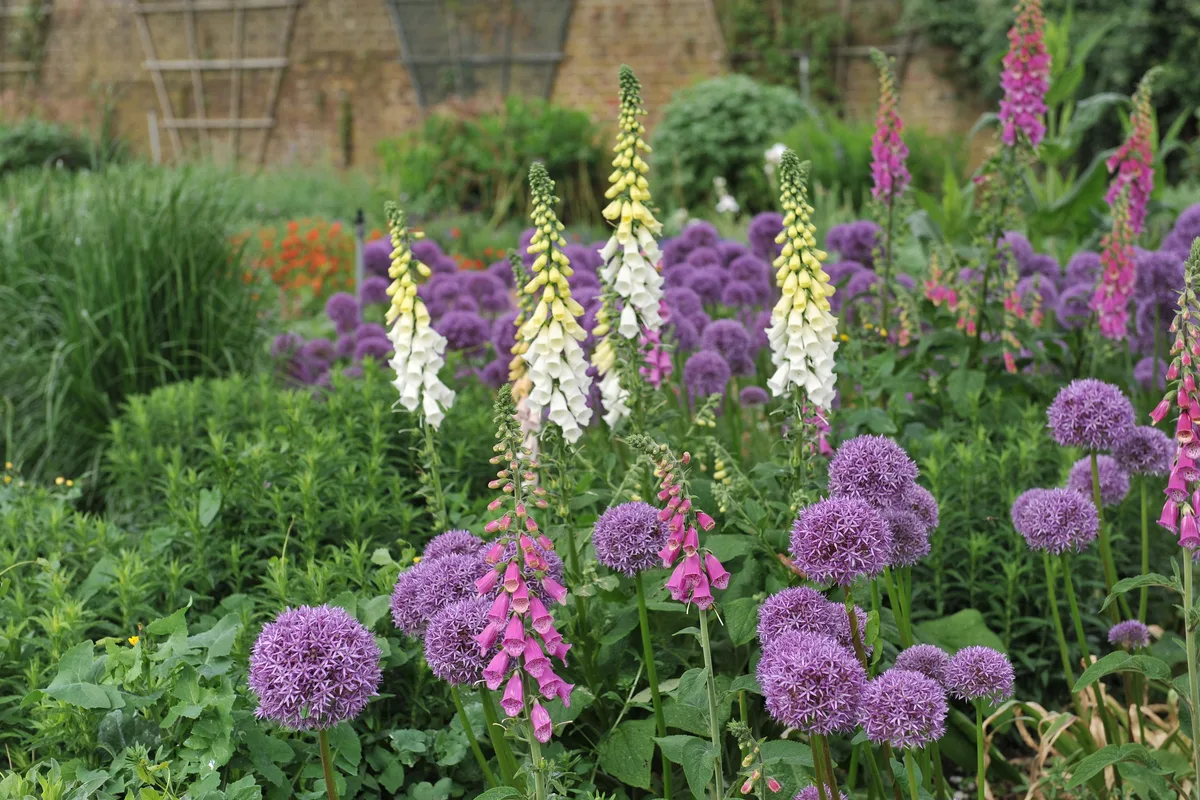
37 Deer Resistant Perennial Flowers
Disclaimer: Nothing is sacred for a hungry deer! But most of the plants listed below range from distasteful or awful smelling to toxic for deer.
Admired in blooming backyards, these plants are stunning, gorgeous perennials avoided by deer.
1. Red Hot Poker (Kniphofia)
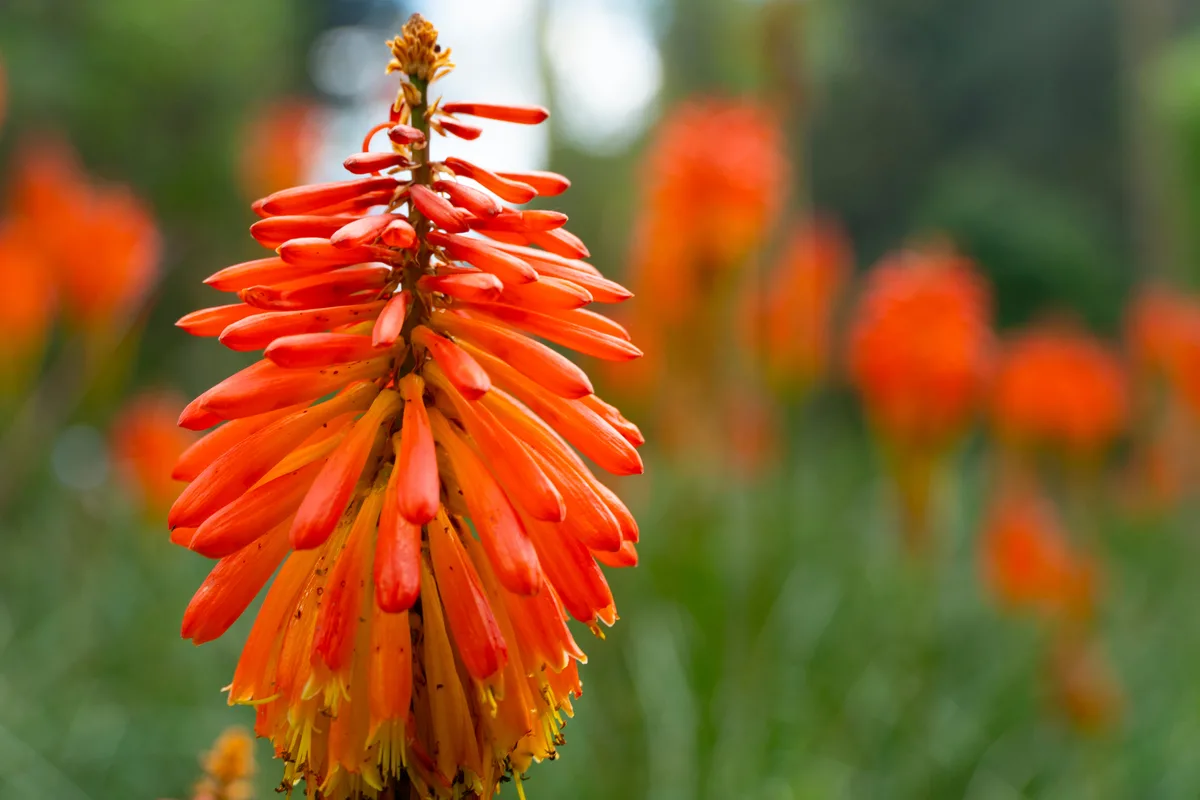
Reaching 2 to 3 feet tall, spikes of red, orange, and yellow bottle-brush-like blossoms rise above arching lance-shaped foliage in mid to late summer.
A sturdy, sun-loving plant, red hot poker prefers well-draining dry soils, full sun and is hardy in zones 5 to 9.
2. Yarrow (Achillea)
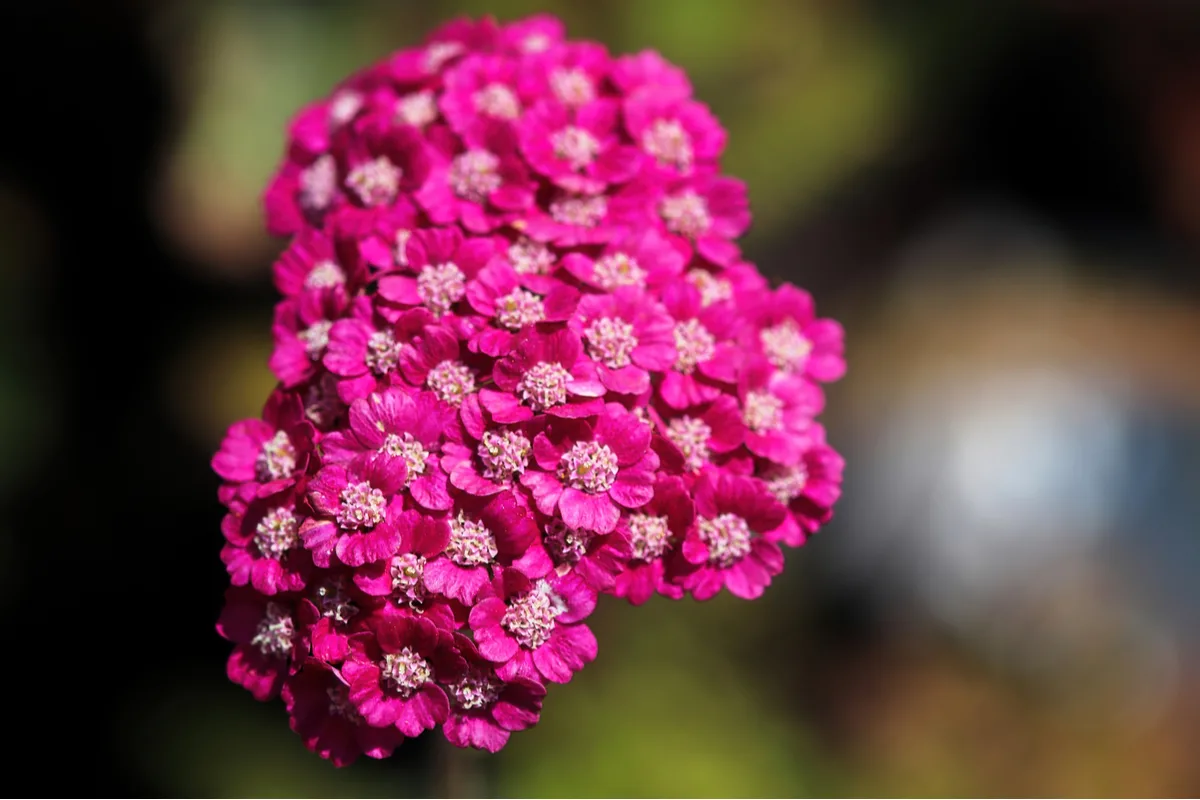
The 2-to-3-foot tall, large flat flower clusters come in white, yellow, pink, and fuchsia which top feathery, fragrant foliage all summer long.
Colony forming, yarrow makes a great ground cover in full sun that is low maintenance, drought tolerant in zones 2 to 9.
3. Milkweed (Asclepias)
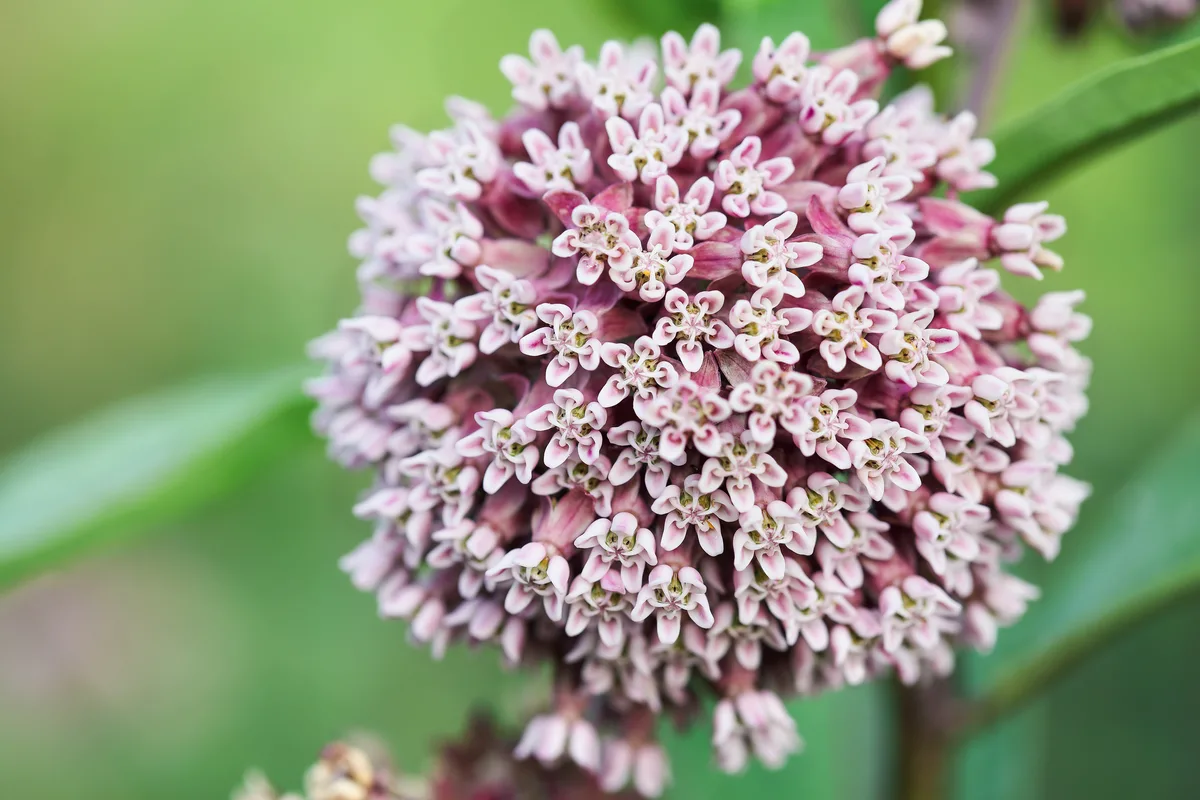
Growing 1 to 4 feet tall, milkweed or butterfly weed blooms throughout summer with nectar-rich showy flowerheads in yellow, orange, and pink.
Deer resistant but adored by fluttering butterflies, milkweed are perfect for nature gardens in full sun with moist, well-draining soils in zones 3 to 9.
4. Pinks (Dianthus)
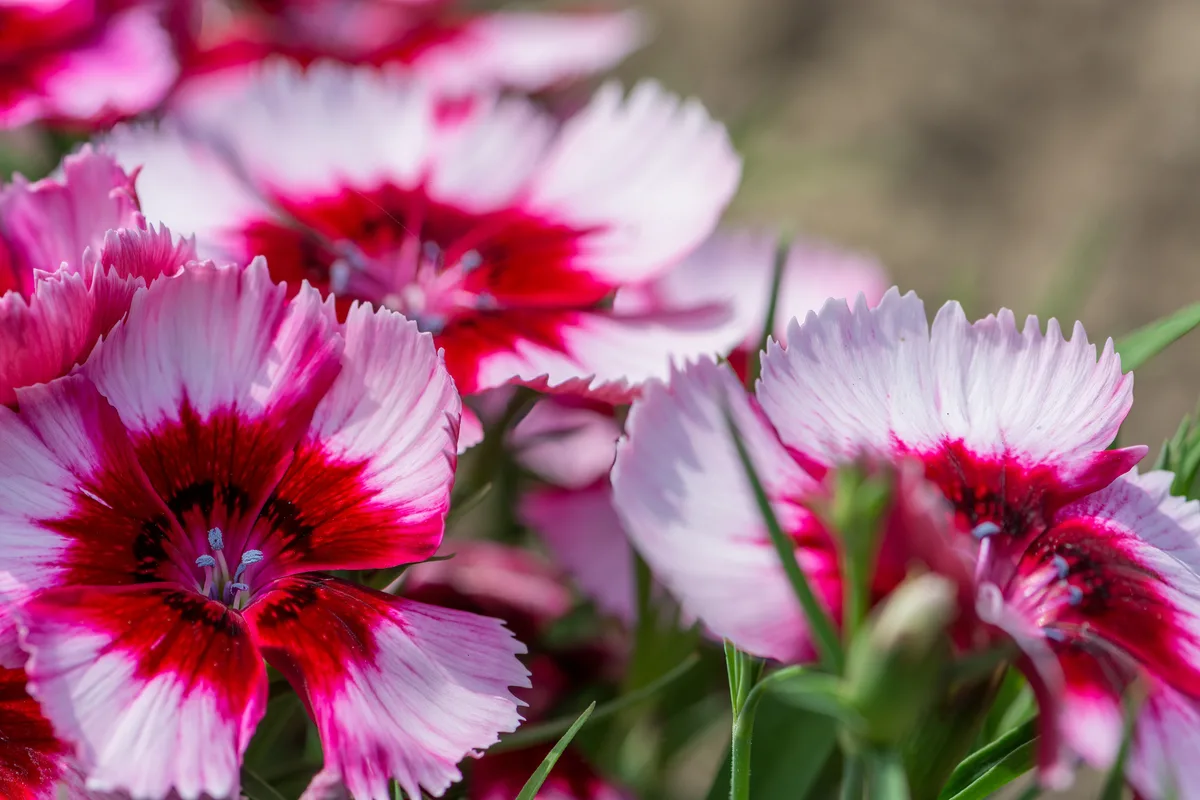
Known as garden pinks or cheddar pinks, perennial dianthus grows 6 to 36 inches tall. They have a remarkable clove-like scent to their multicolored white, pink, and red frilly flowers.
Delightful mounded or trailing plants, well suited to cottage gardens and borders, pinks thrive in moist soils in full sun in zones 3 to 9.
5. Coneflower (Echinacea)
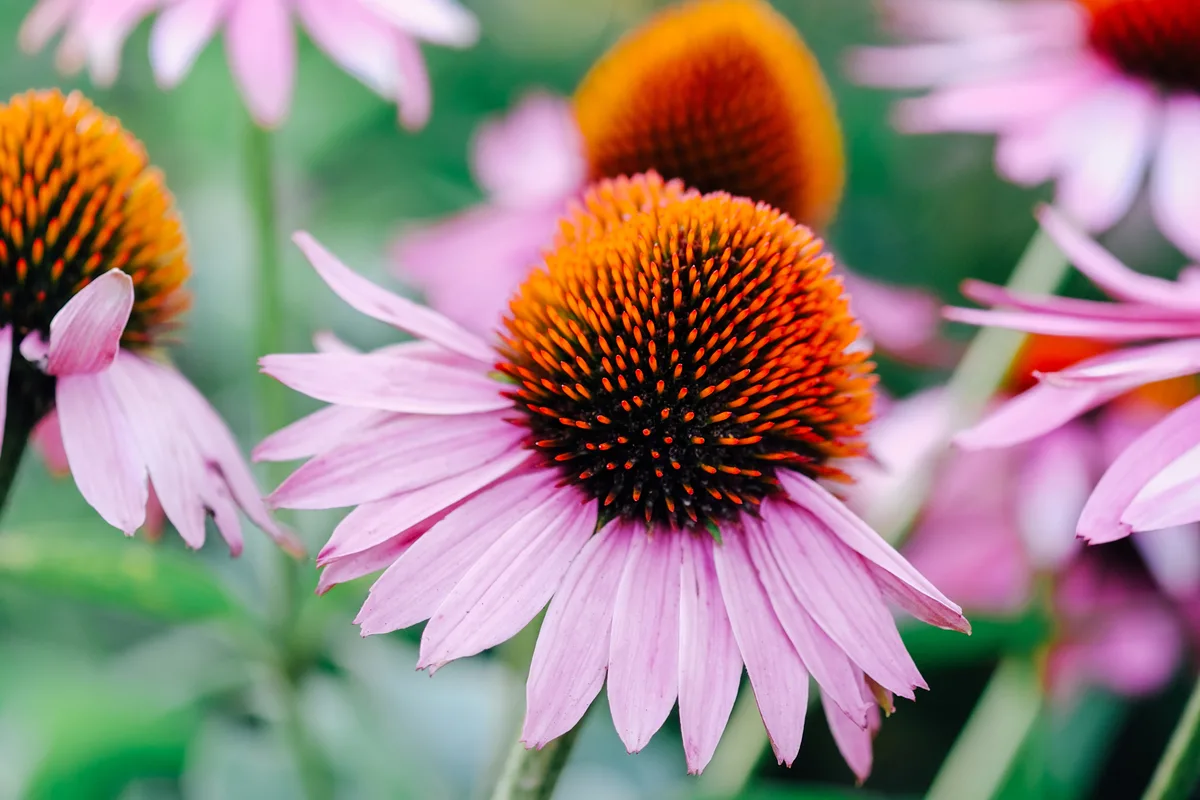
The 2-to-5-foot plants of coneflower are topped with masses of large purple/pink cone-shaped, daisy-like flowers through summer.
Loved by birds, bees, and butterflies in naturalized gardens, coneflower thrives in full sun to part shade in slightly acidic well-draining soil in zones 3 to 8.
6. Globe Thistle (Echinops)
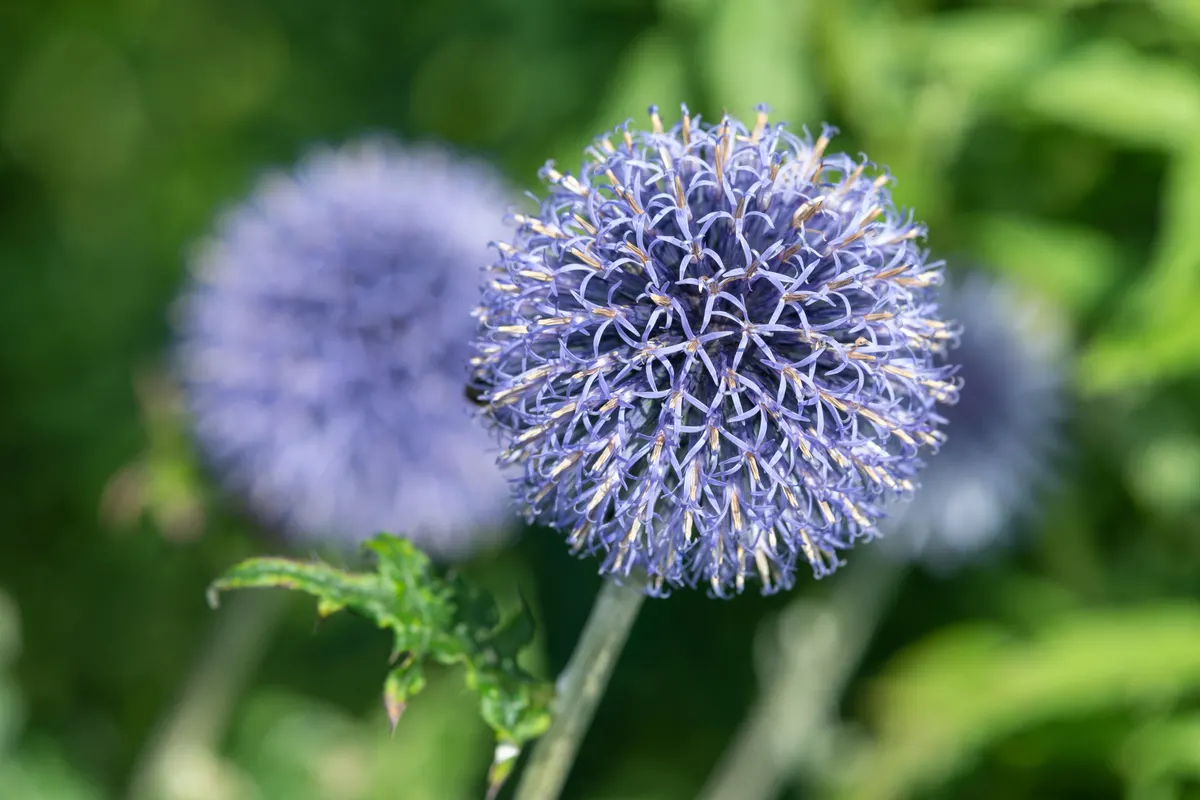
Spikey foliage deter deer while framing blue spherical blooms through summer on plants that grow 2 to 5 feet tall.
An excellent garden plant for butterflies, globe thistle is drought tolerant, great in rock gardens, preferring full sun and zones 3 to 9.
7. Blanket Flower (Gaillardia)
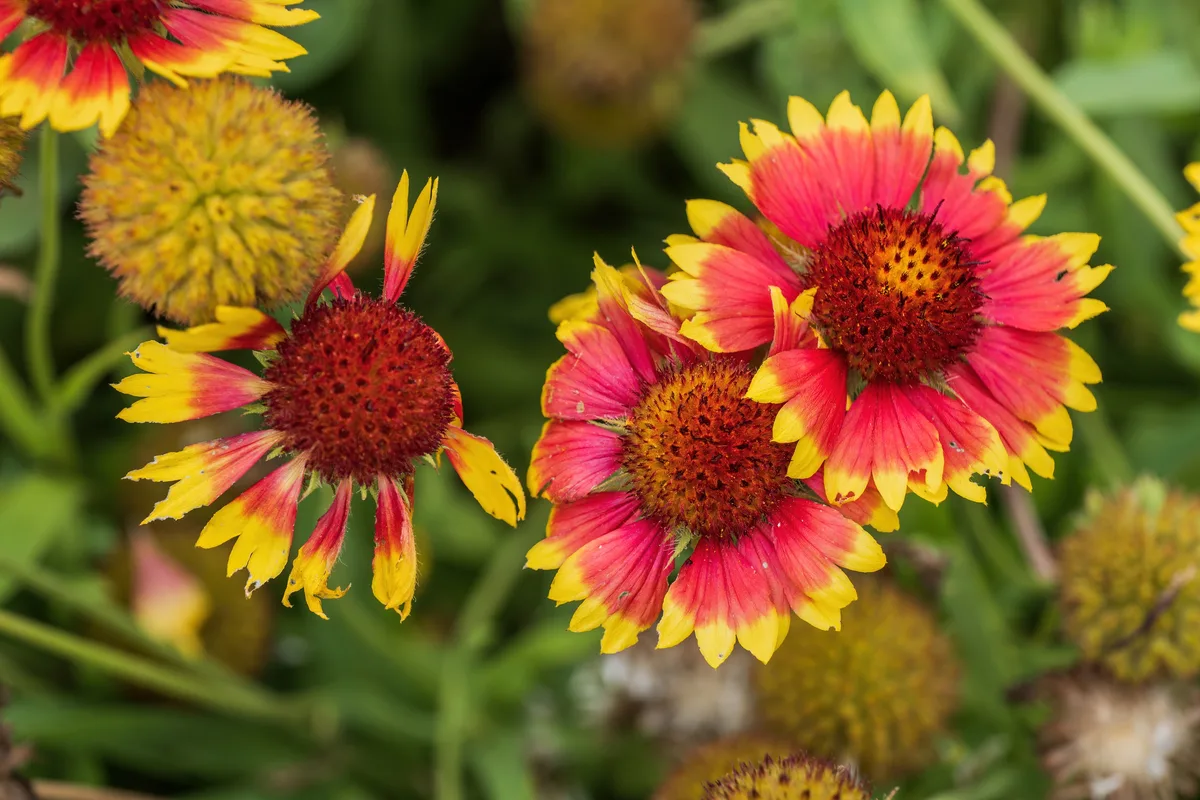
A fast growing, short-lived native perennial that is colony forming.
Blanket Flower reach 2 feet tall and are topped with masses of multicolored daisy-like brilliant flowers in hot shades of reds and yellows.
Blooming repeatedly throughout the summer months, blanket flower brightens sunny spots in poor to average soil in zones 3 to 10.
8. Daylily (Hemerocallis)
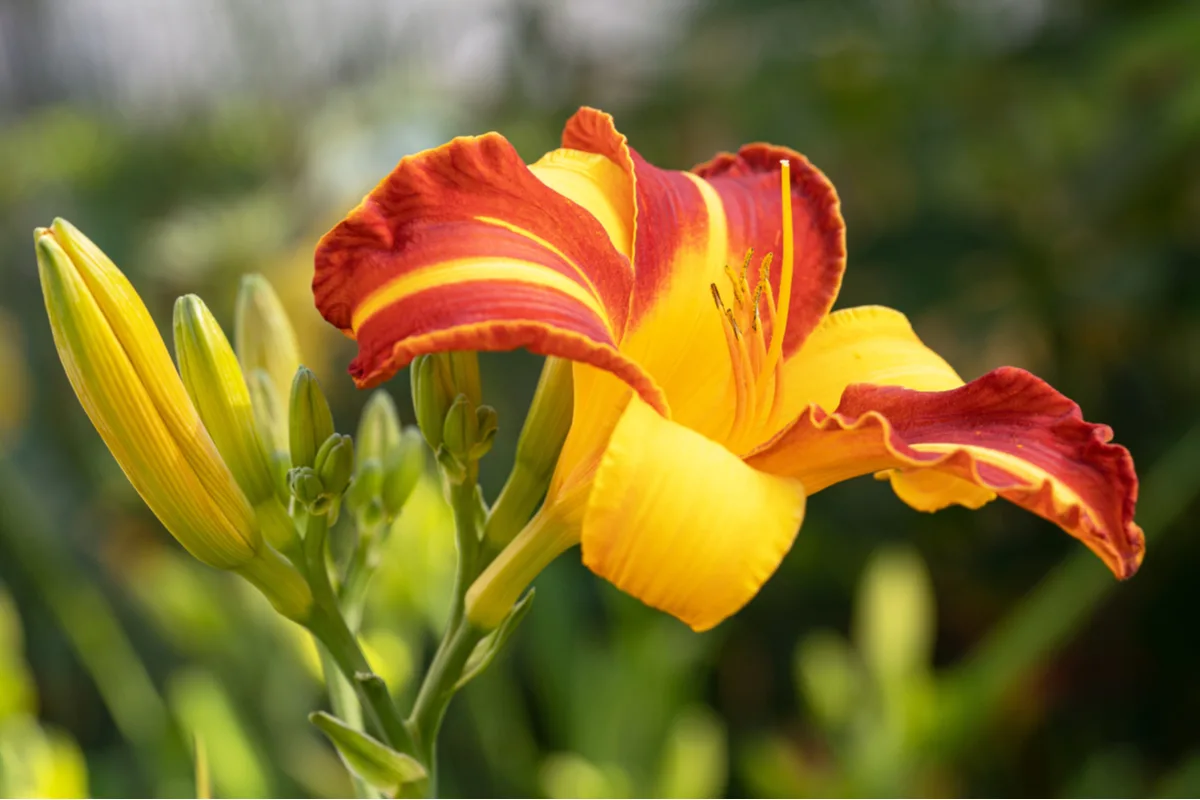
Long-living daylilies are not touched by deer at my home, although I’ve seen them listed as preferred by deer by other gardeners.
Arching grass-like leaves form the perfect backdrop for multi-flowered stems holding graceful blooms in both warm and cool shades in solids and multicolored styles.
The tough, drought tolerant plants reach 1 to 5 feet tall in deep fertile soils, full sun to part shade, in zones 3 to 10.
9. Lupins (Lupinus)
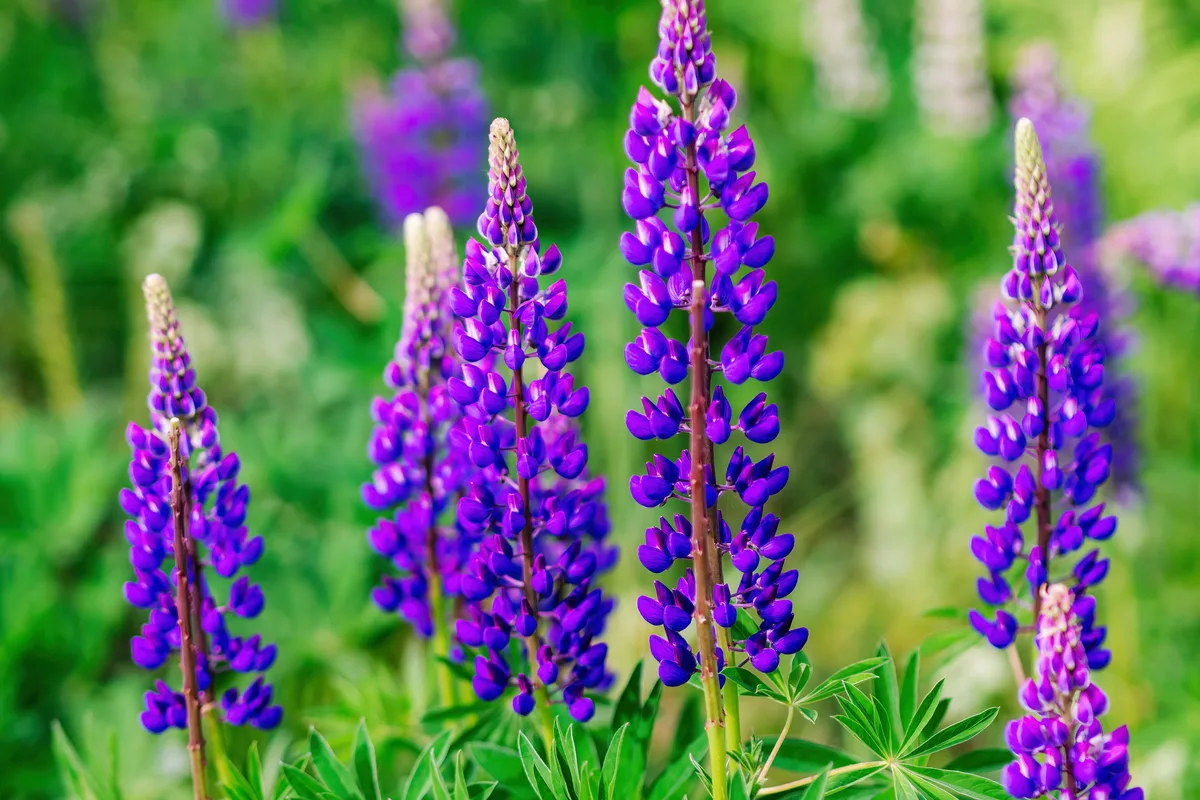
Fantastic segmented palmate leaves boast a tropical feel in this 3-to-4-foot, spring-blooming wildflower topped with lush blue, pink, red, white, purple, or bicolor flower spikes.
Loving full sun, Lupins naturalize easily in rich moist soil in zones 4 to 8, reverting to their natural blue shades over several generations.
10. Garden Phlox (Phlox paniculata)
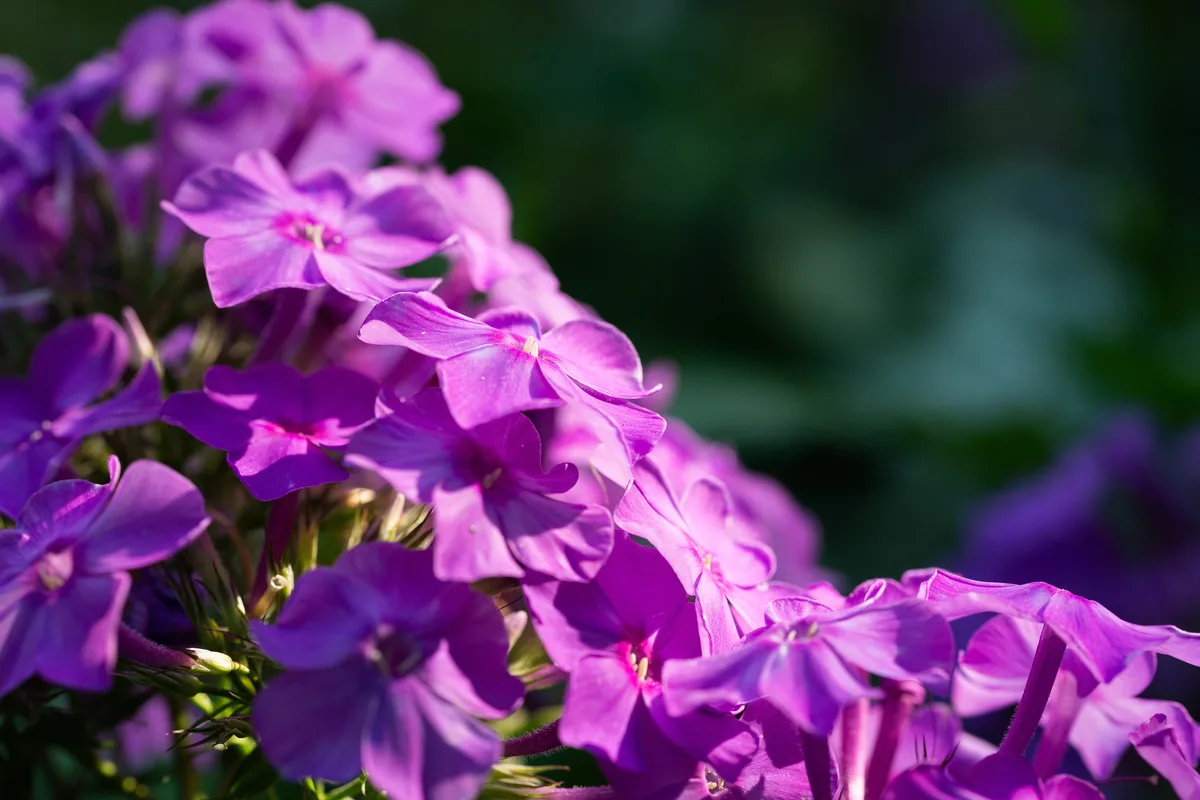
Fragrant, long-lasting blooms form robust panicles in pinks, whites, reds, and purples on top of 3-to-4-foot plants through summer and into fall.
An essential cottage garden flower, garden phlox are low maintenance, prefer full sun to part shade and moist neutral soils in zones 4 to 8.
11. Stonecrop (Sedum)
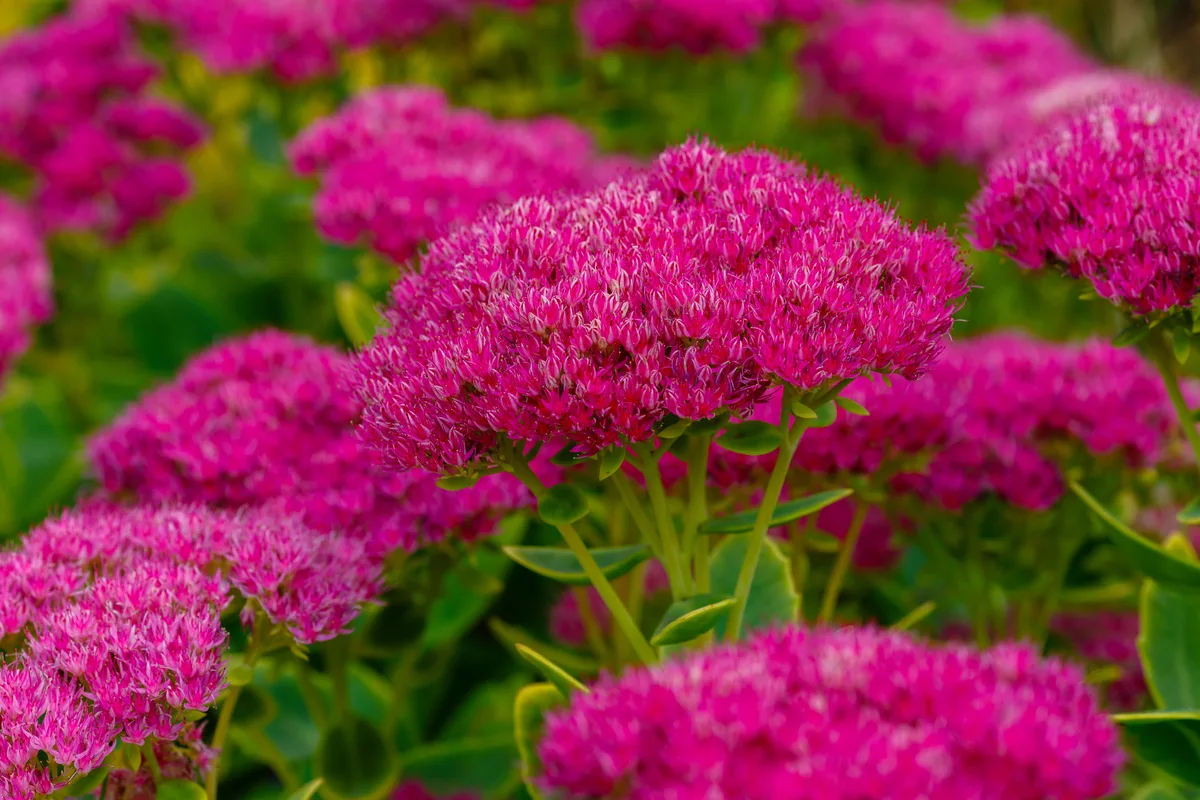
Smothered in star-shaped flowers in fall, sedums are drought-tolerant succulents that vary in size and shape from upright growers to low-growing groundcovers 6 to 24 inches tall.
Tough as nails, full sun loving, and hardy in zones 3 to 10, stonecrops are wonderful for rock gardens and borders, help to feed late season bees, and like sandy, well-drained soil.
12. Bleeding Hearts (Lamprocapnos spectabilis)
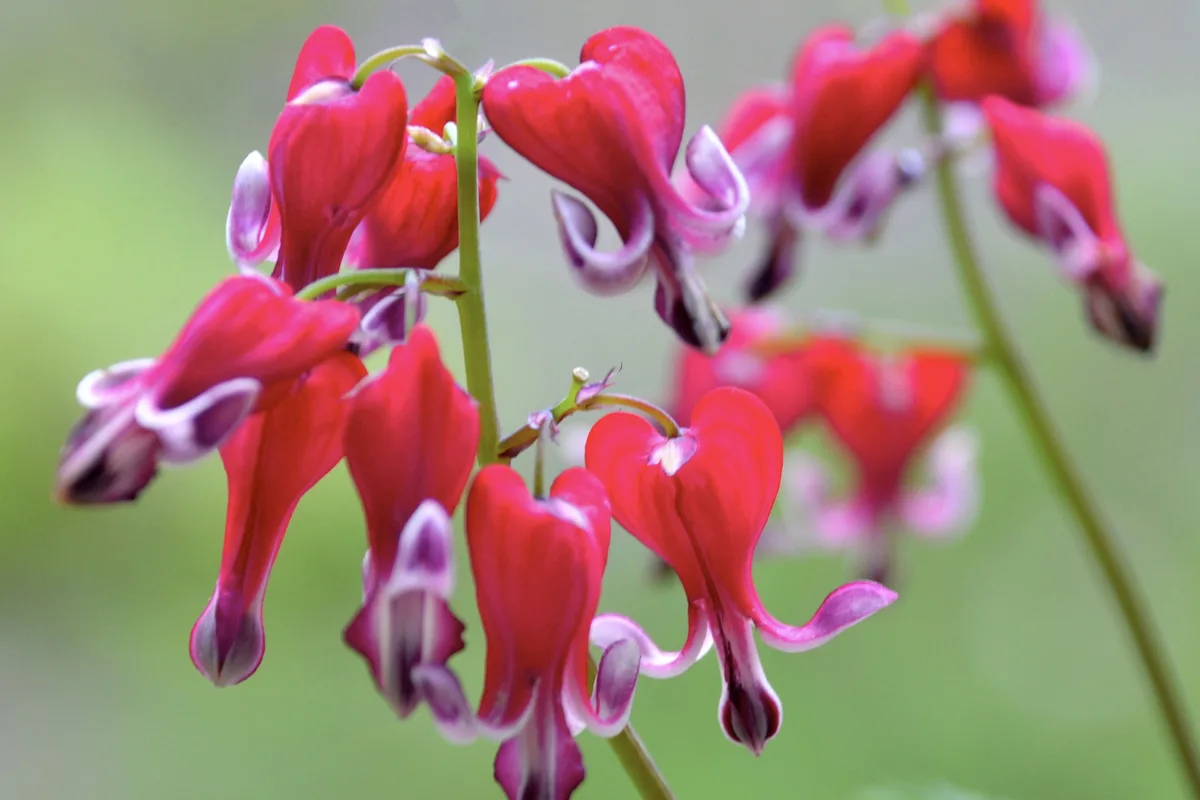
Classic bleeding hearts are known for finely divided foliage under spring-blooming dancing dangling heart-shaped pink, white, and red flowers that hang from graceful arching stems.
This deer-resistant perennial will help fill out the shade garden in zones 3 to 9, preferring moist, rich, well-draining soil.
13. Monkshood (Aconitum)
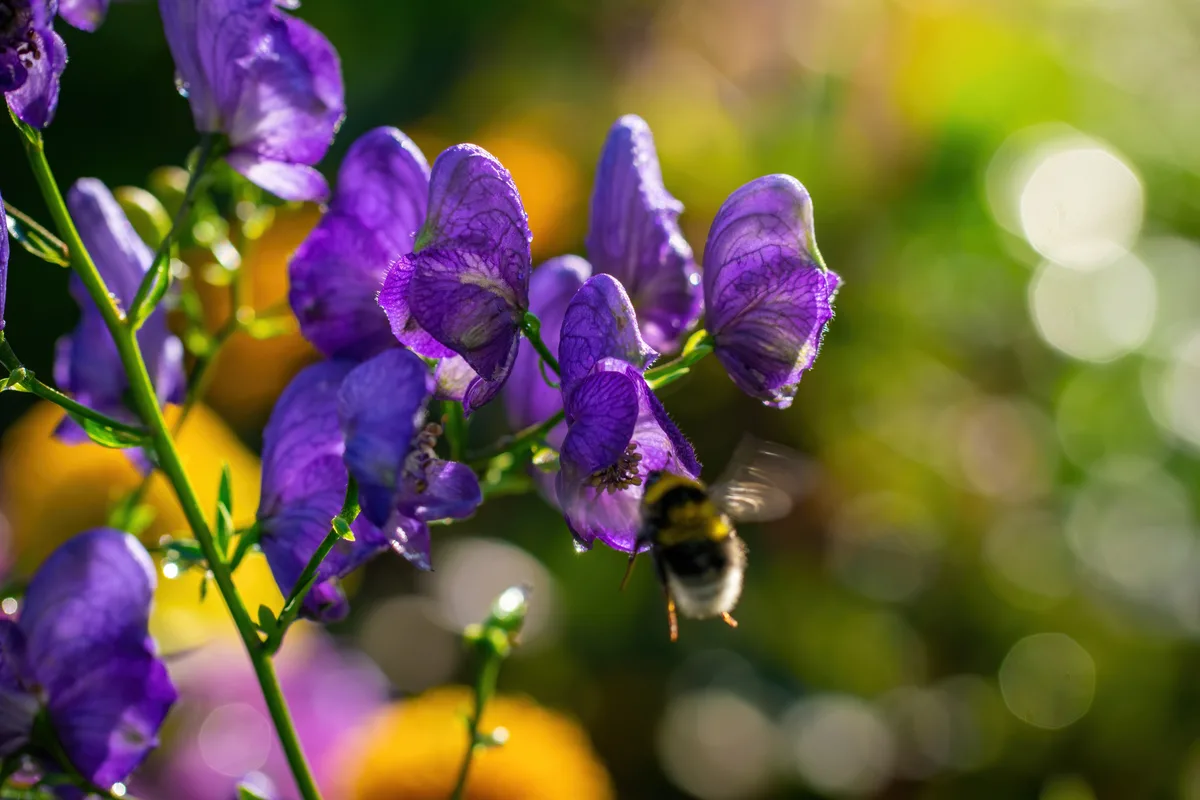
An upright long-blooming blue perennial that grows 2 to 4 feet tall with glossy deeply cut palmate leaves and spikes of whorled hooded blue, purple, pink and white flowers.
Thriving in cooler climates, monkshood is hardy in zones 3 to 7, and as a poisonous plant, can grow quickly into a short hedge to deter deer.
14. Sea Holly (Eryngium)
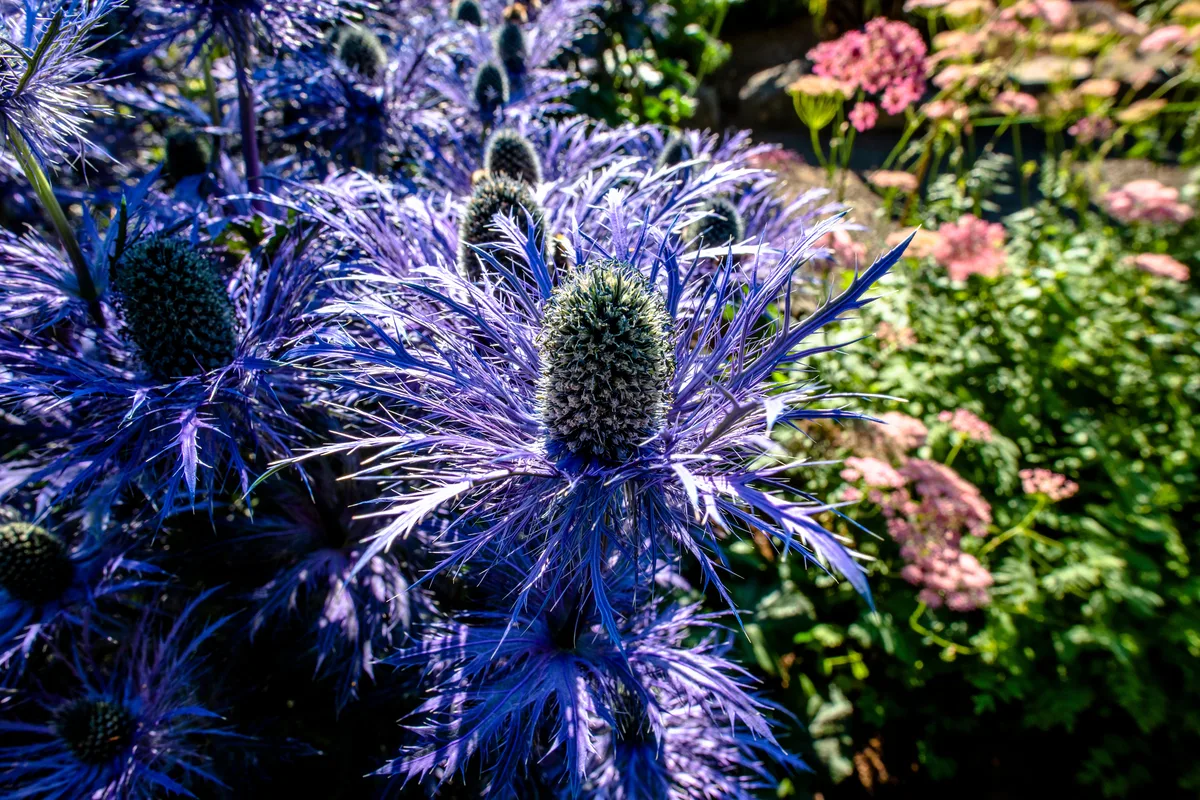
The other-worldly metallic blue cone-like flowers are framed with a striking spiked collar on top of 2- to 3-foot-tall stems which rise above a basal rosette of sharp leaves in summer.
These appealing long-lived perennials make great cut flowers in full sun and add interest to borders and rock gardens in hardiness zones 5 to 9.
15. Columbine (Aquilegia)
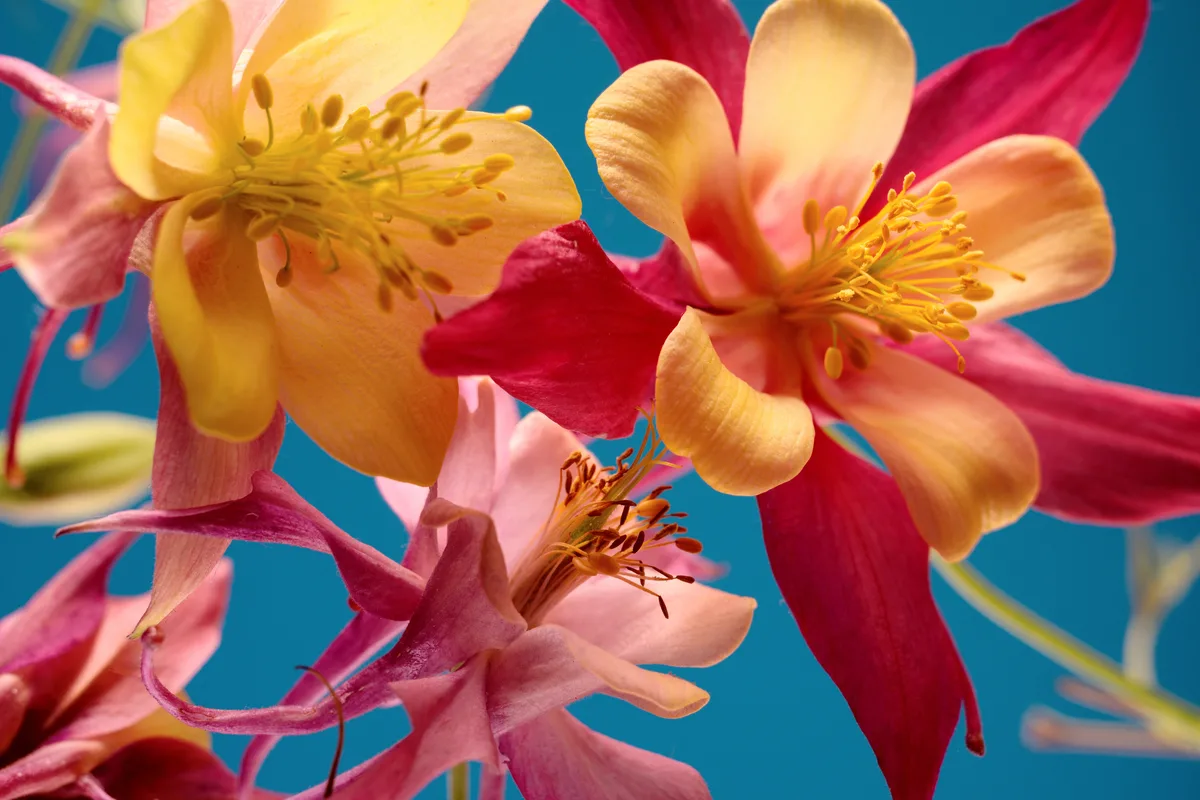
At 1 to 3 feet tall, delicate stems hold spur-like multicolored blossoms above columbine’s pale green clover-like leaves.
In zones 3 to 9, columbines thrive in woodland and nature gardens in full sun to part shade in rich, moist soils.
16. Veronica Speedwell (Veronica)
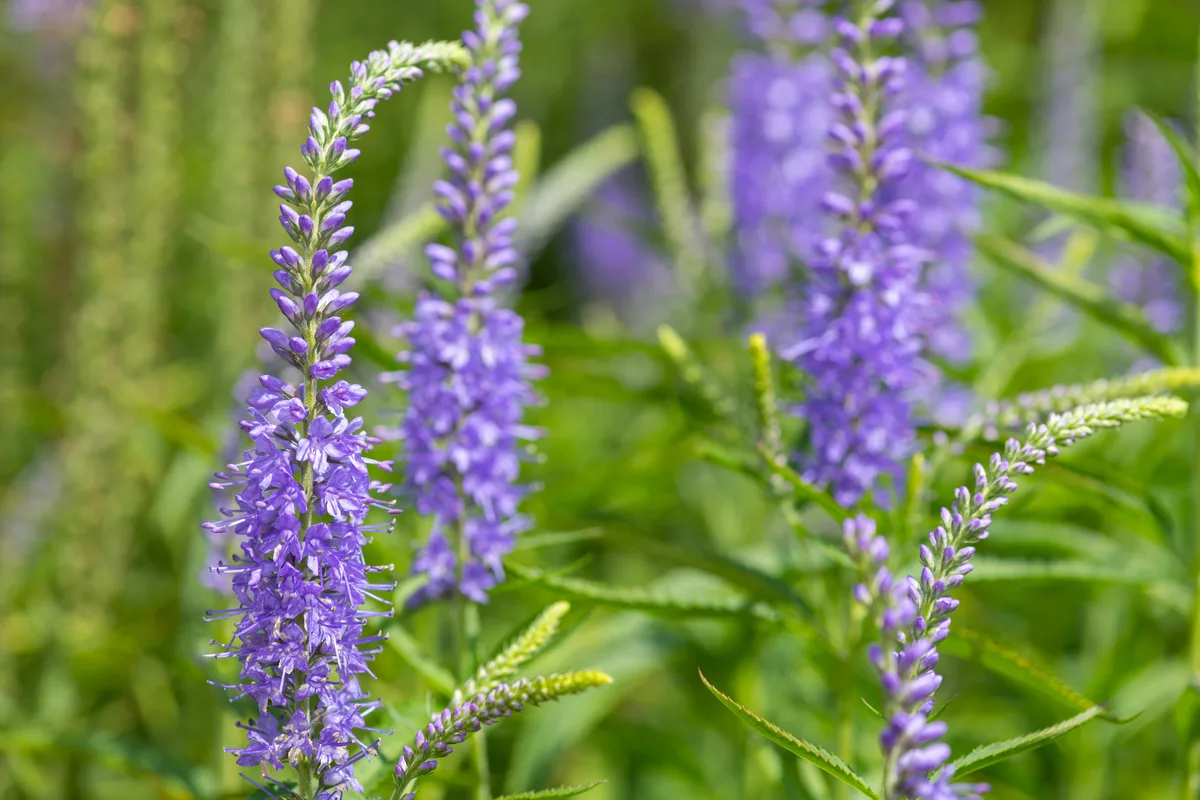
Waving 1-to-3-foot spikes of purple, blue, pink, and white, arrive in late spring and continue blooming long into summer.
Tolerant of a bit of shade but preferring full sun, speedwells are easy going welcomers of bees, butterflies, and hummingbirds in zones 3 to 8.
17. Goatsbeard (Aruncus)
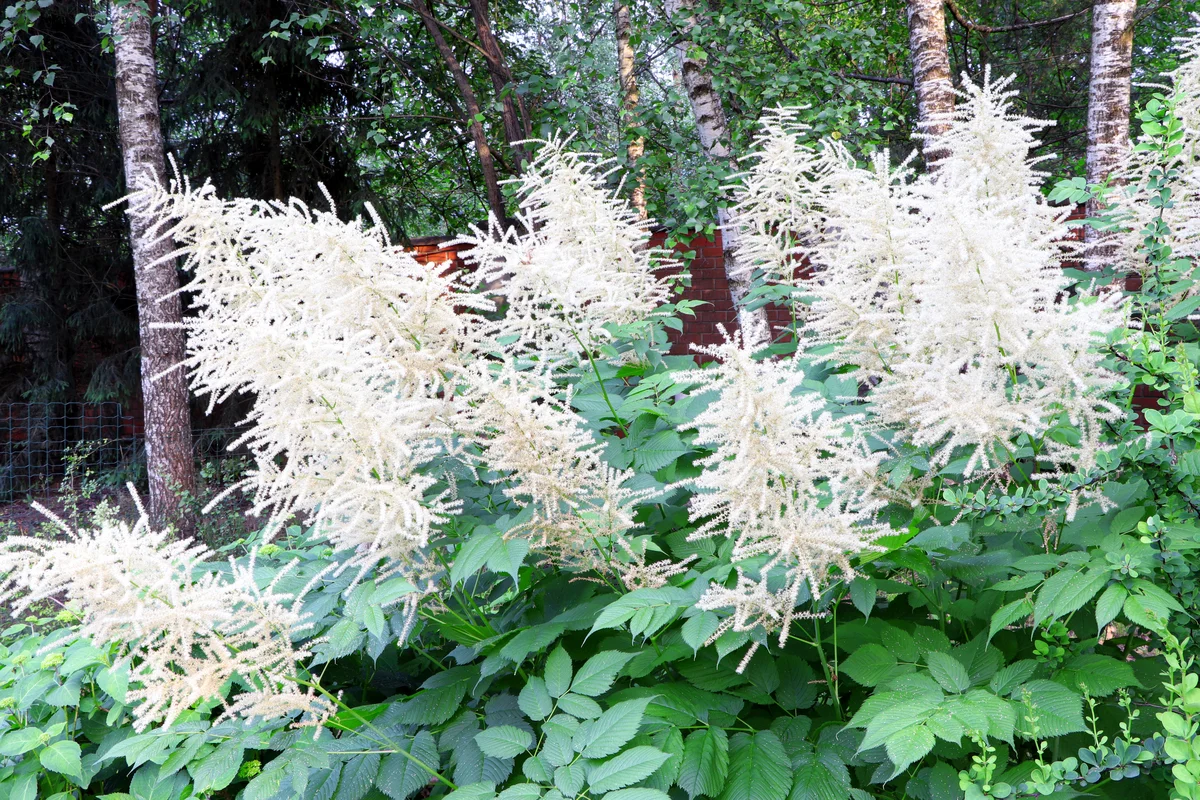
A huge bushy native plant that grows 4 to 6 feet tall with lacy foliage under graceful feathery white sprays of blossoms in summer.
An easy perennial that loves both sun and shade, Goatsbeard grows in average soil in zones 3 to 7.
18. Foamflower (Tiarella)
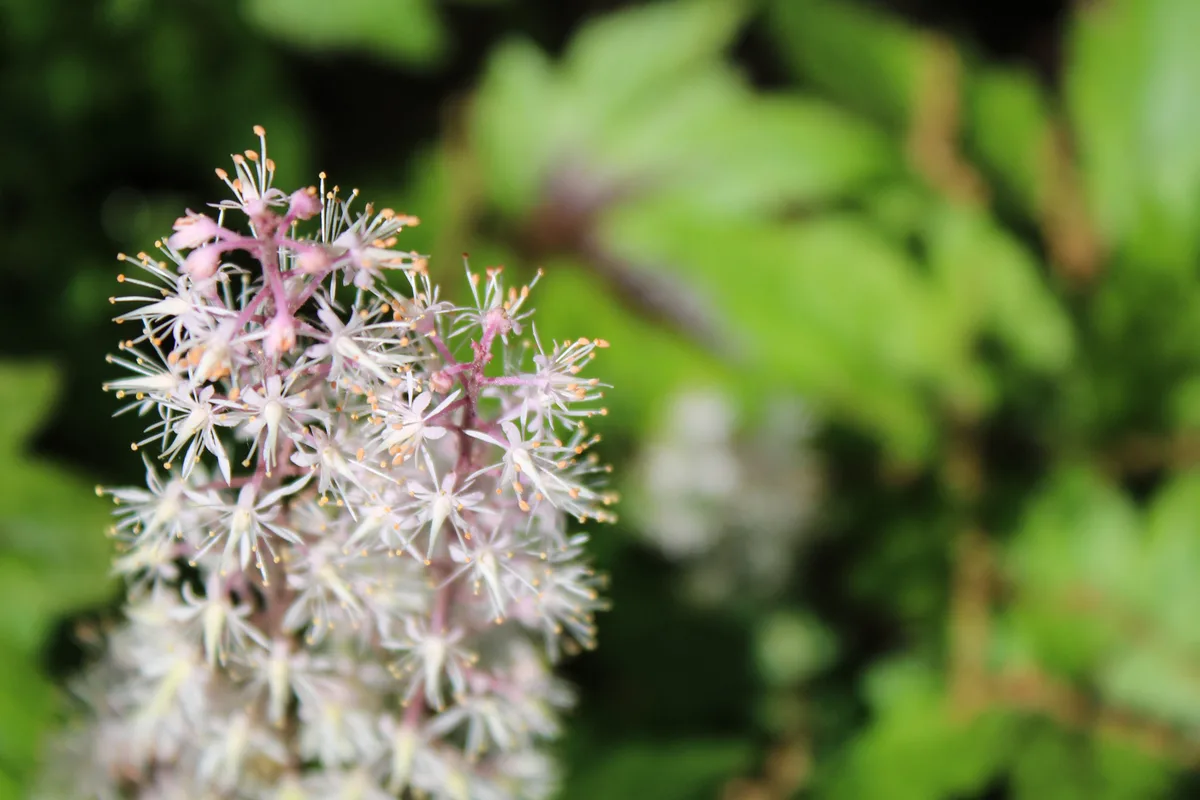
Gorgeous hairy colorful and segmented foliage below with glowing soft plumes of white flowers above in spring up to 2 feet tall.
A native plant that loves cool, moist, rich soils and shade to light shade, foamflowers colonize forming an interesting carpet of color in zones 4 to 9.
19. Oriental Poppy (Papaver orientale)
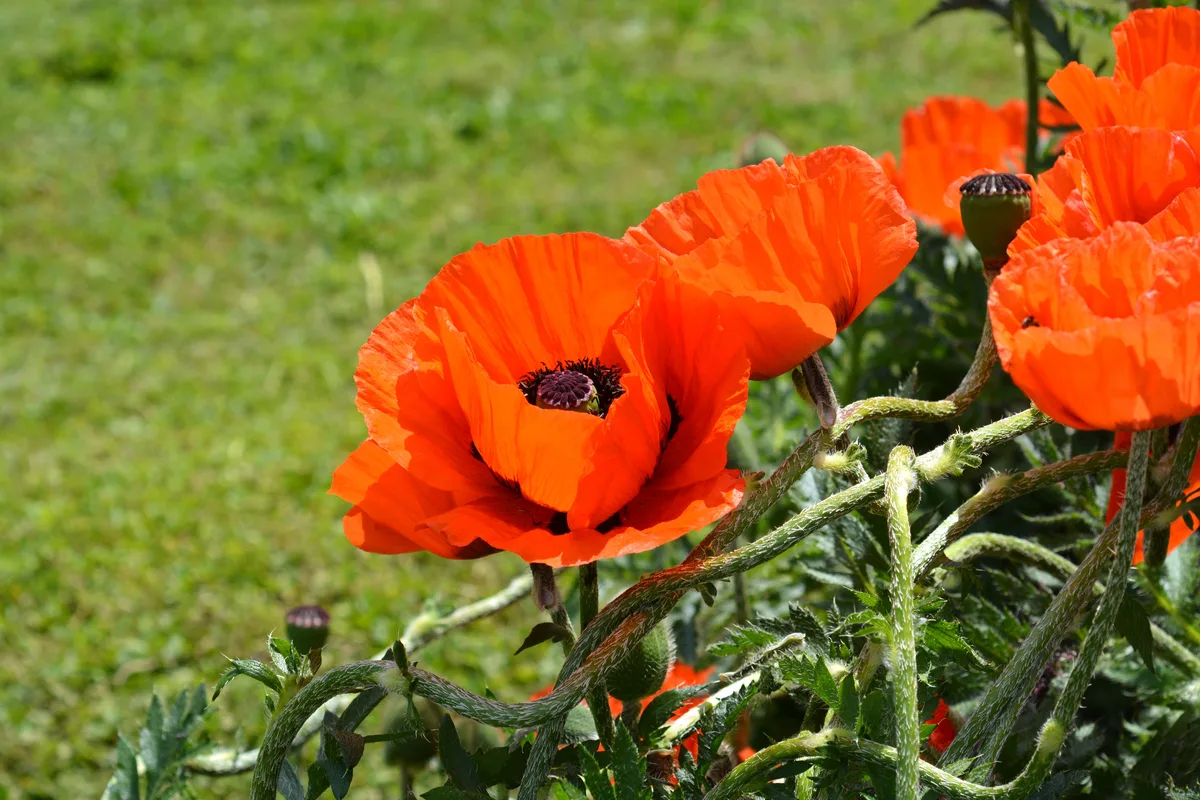
Spectacular papery petals are eye-popping red, orange, pink, and white, surrounding dark centers.
Oriental poppies bloom in spring above spiky, thistle-like foliage.
A fantastic cut flower with unique seed heads that are excellent for dried floral arrangements, Oriental poppies love deep rich soil, full sun, and are hardy in zones 3 to 9.
20. Peony (Paeonia lactiflora)
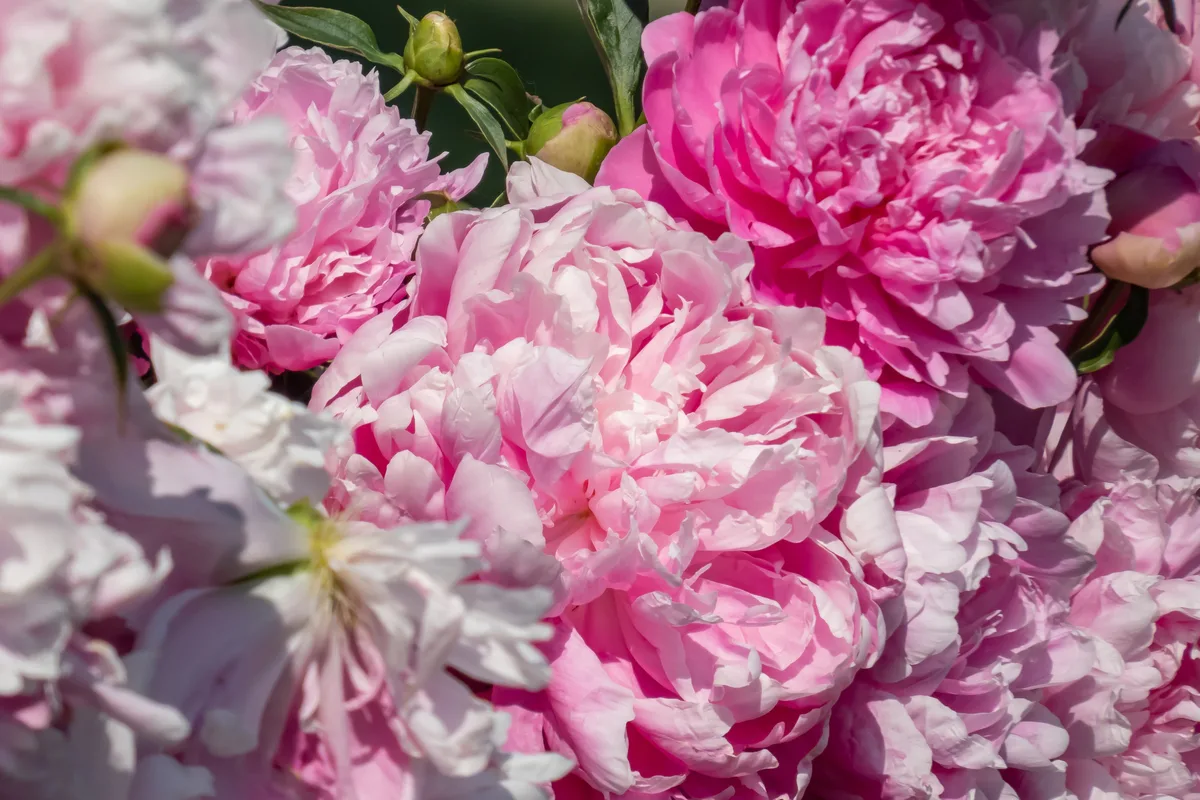
Huge petals pile in voluptuous layers forming fragrant 4-to-6-inch peony flowers ranging in shades of white, yellow, coral, pink, and red on 3-to-4-foot plants.
Long lived peony plants are a favorite in cottage gardens and mixed perennial borders in full to part sun while being incredibly hardy in zones 2 to 9.
21. Lavender (Lavandula)
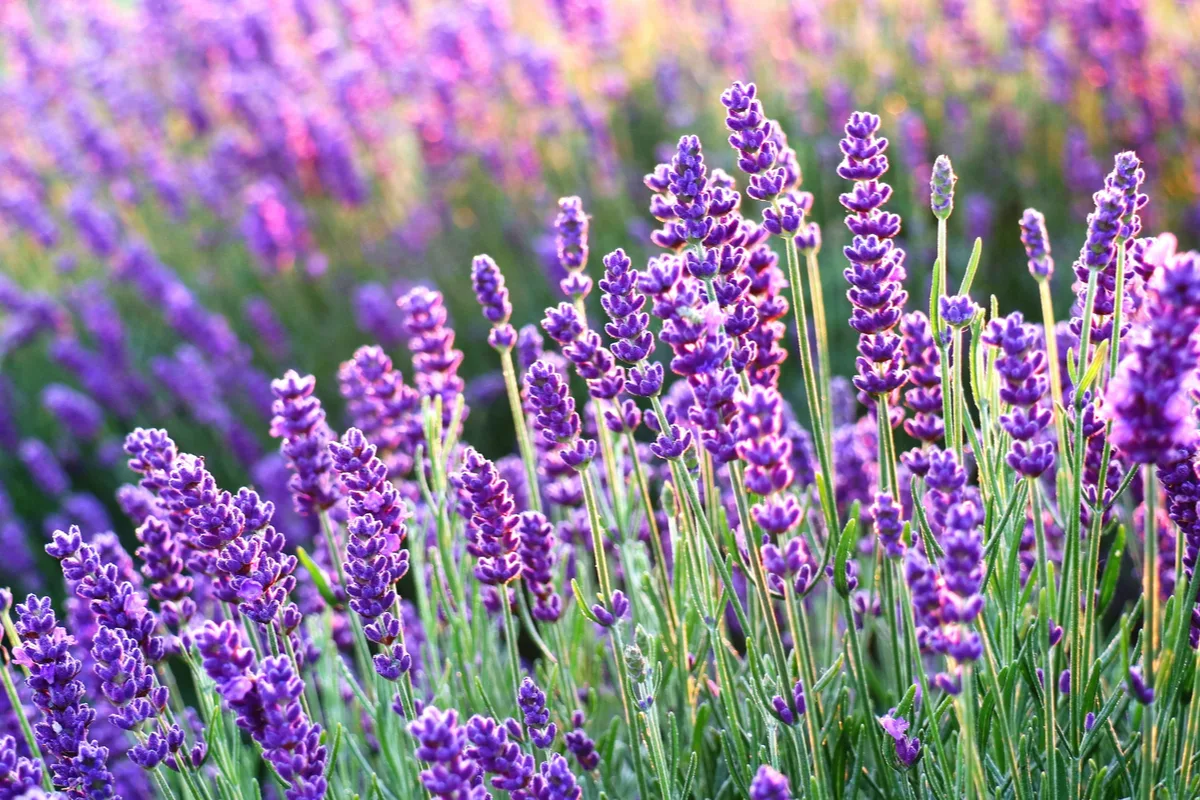
The alluring scent of lavender’s purple flower spikes and foliage, which grow 1 to 3 feet tall depending on variety, is surprisingly unloved by deer.
A classic perennial herb with countless uses, lavender prefers full sun and slightly fertile, well-draining soils in hardiness zones 5 to 9.
22. Catnip (Nepeta cataria)
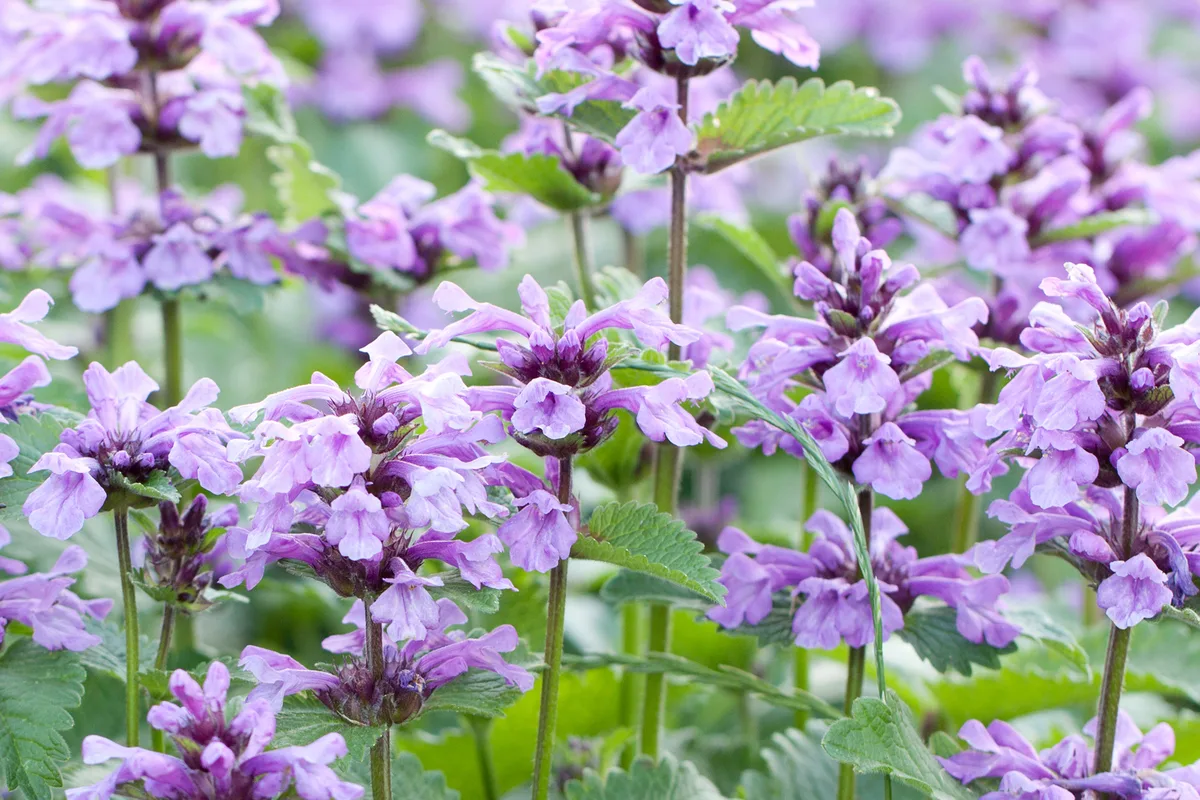
Blooming in colors ranging from white through pinks and purples through spring all the way to early fall, catnip is a low maintenance deer deterrent that grows 2 to 3 feet tall.
Hardy in zones 3 to 7, catnip looks lovely in the perennial border, herb garden, and rock garden as well.
Thriving in full sun to part shade, catnip, however, will welcome visiting kitties, and grows in well-drained medium to dry soils.
23. Foxglove (Digitalis purpurea)
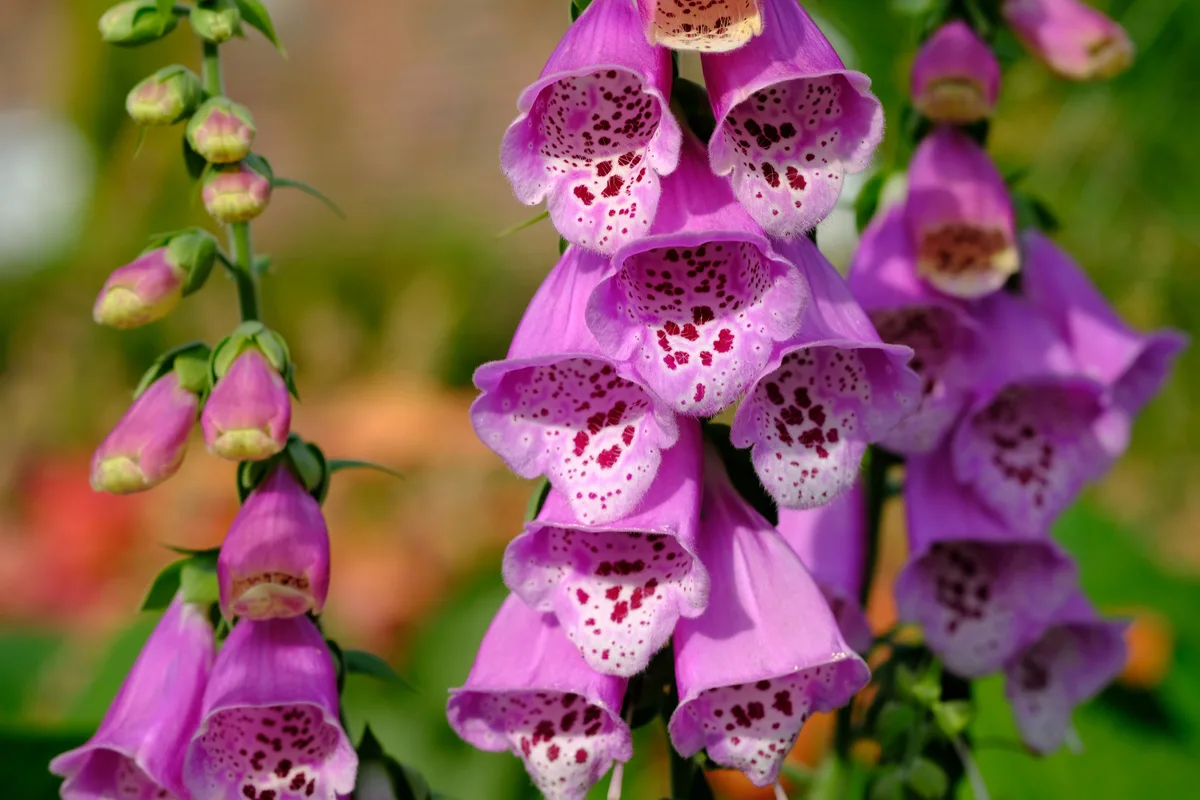
Enchanting to the eye, foxglove’s 2-to-5-foot speckled whorls of tubular flowers, while gorgeous in spring are poisonous.
Foxgloves tolerate challenging dry shade in zones 4 to 10, thriving in full sun to part shade in well-drained soils.
24. Sage (Salvia)
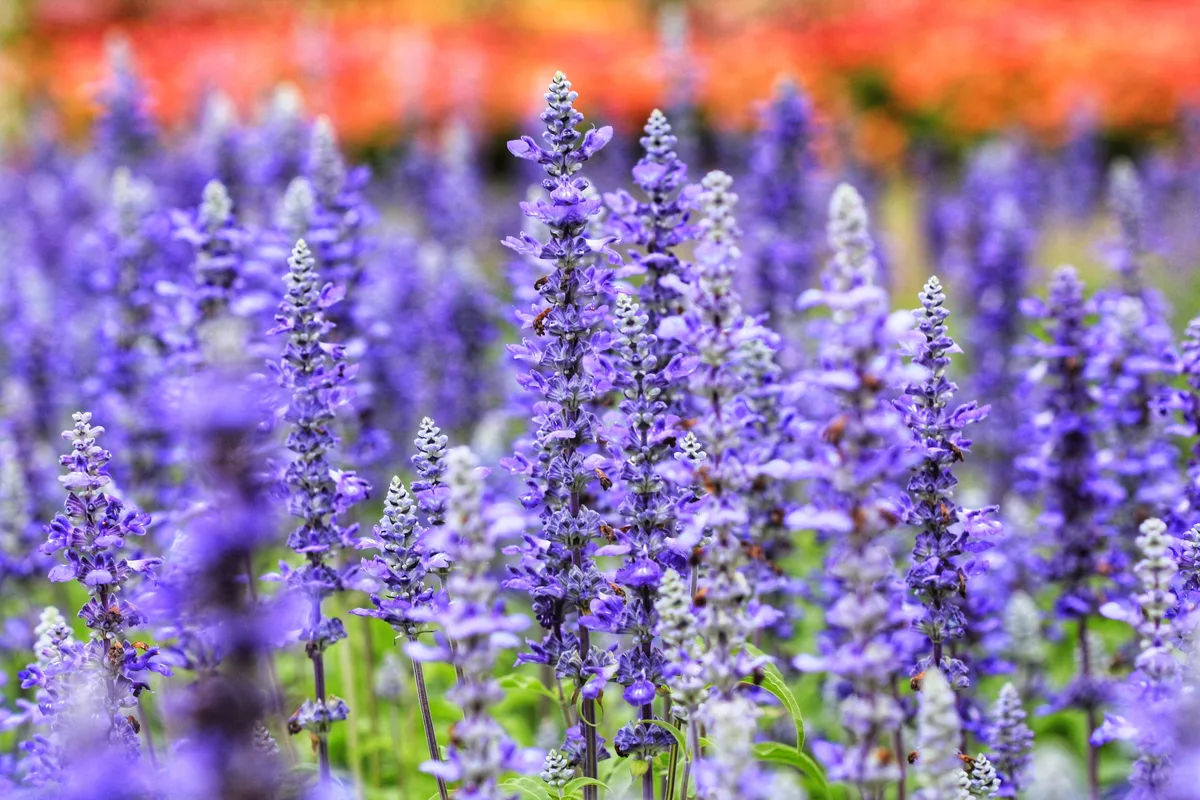
Varieties of this aromatic herb grow 1 to 2 feet tall with spikes of blue, purple, pink, and red flowers throughout the summer months.
Drought tolerant once established, perennial sages are hardy in zones 4 to 8, beautiful in full sun in the perennial border and herb garden too.
25. Russian Sage (Perovskia)
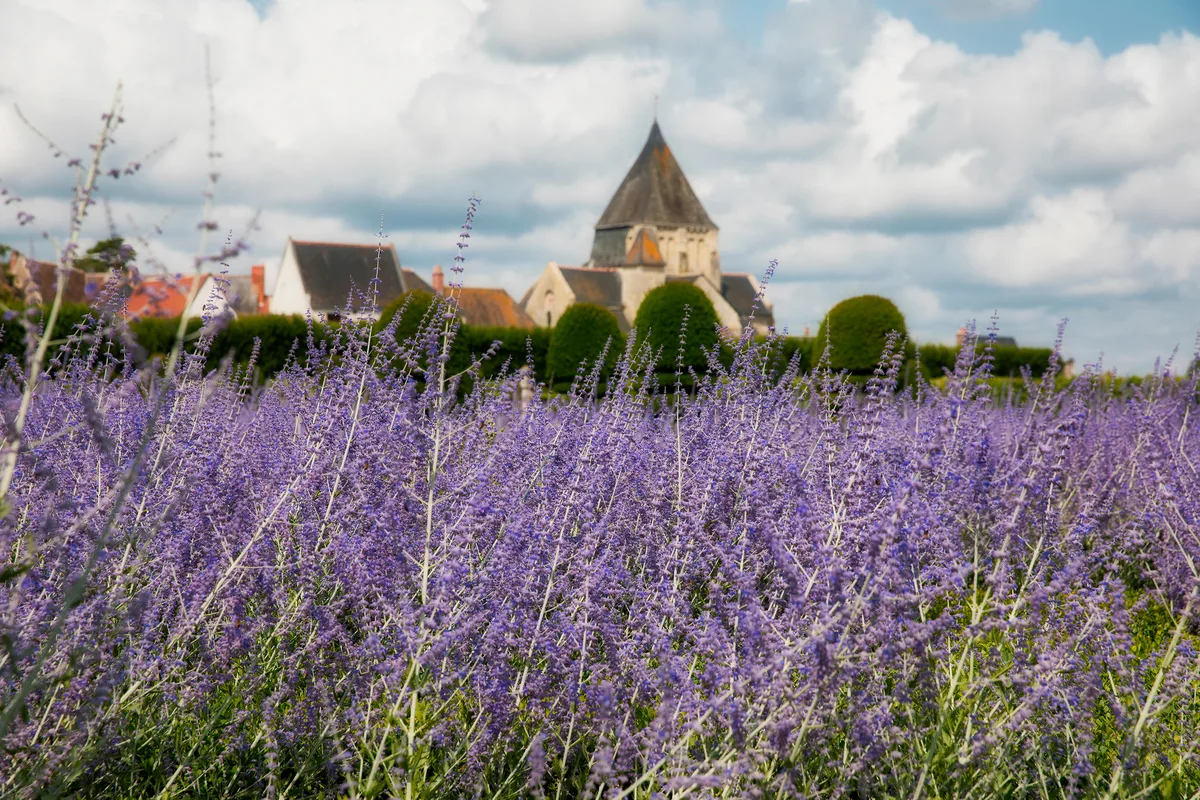
Now a member of the Salvia genus, 3 to 5 foot tall Russian Sage as a beautiful deer resistant plant with airy abundant blooming branches in hues of purple.
A wonderful hedge-forming perennial, Russian Sage loves poor dry soil, full sun, and is hardy in zones 4 to 9.
26. Ligularia (Ligularia)
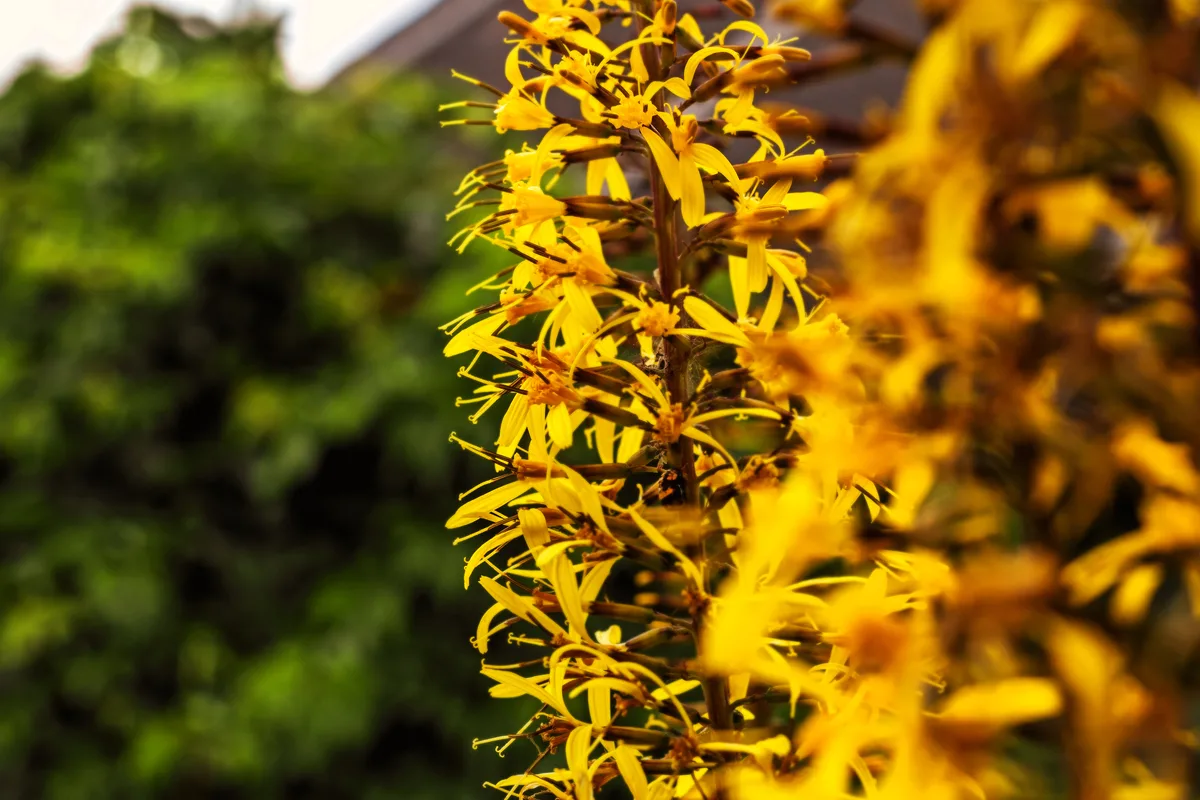
Glowing embers erupt above glossy palmate leaves in 3-to-8-foot spikes or clusters of daisy-like golden flowers in summer.
A jungle-looking plant, Ligularia loves moist shade in deep rich soils and hardiness zones 4 to 9.
27. Iris (Iris)
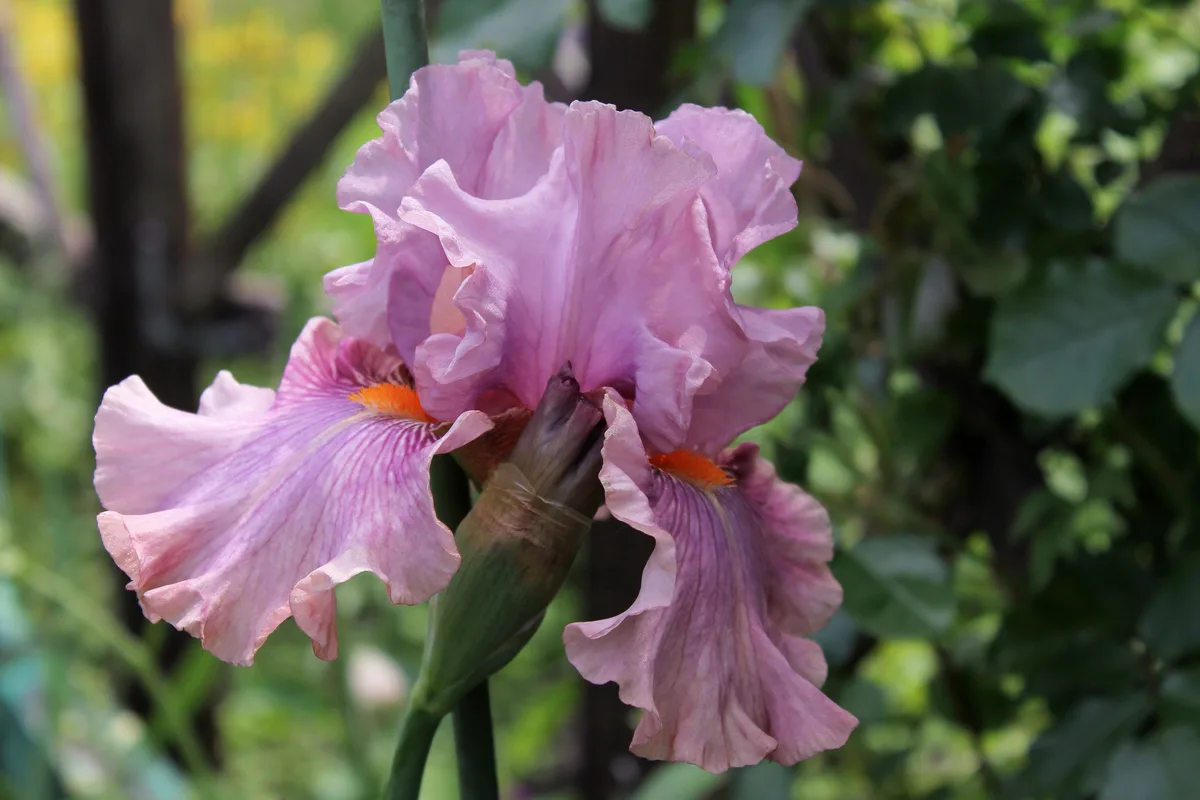
Iris have upright sword-like leaves with flamboyant spring flowers in colors ranging from red, orange, and yellow, but also brown, purple, blue, and even black.
Tough perennials, hardy in zones 3 to 9, that bloom best with the top rhizome exposed, iris love full sun and sandy soils.
28. Lamb’s Ear (Stachys byzantina)
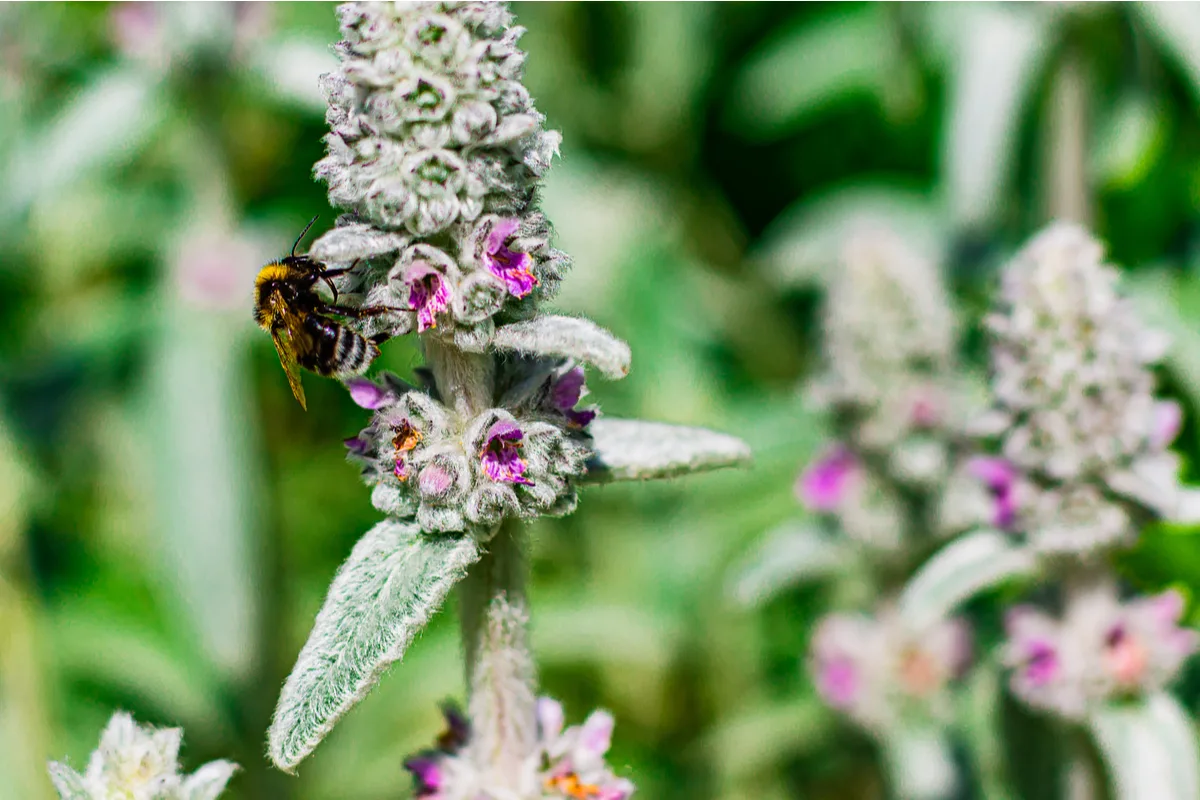
Soft, velvety, gray-green oval leaves form a ground-cover, spreading 4 to 5 feet wide, with delightful purple flower spikes under 2 feet tall in spring and summer.
Easy going, Lamb’s ear grow best in full sun to part shade in dry to medium soils in zones 4 to 7.
29. Bee Balm (Monarda)
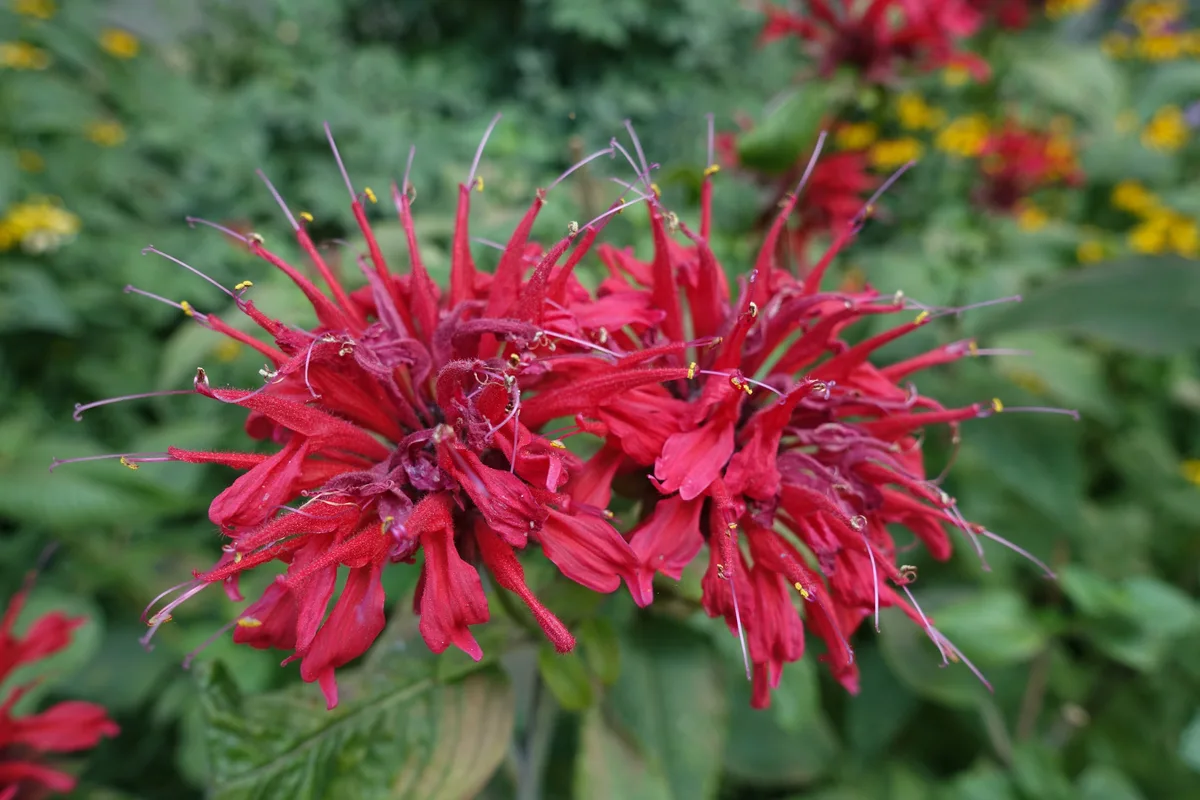
Masses of vibrant blooms all summer in bright red, crimson, white, and pink, a bee and butterfly favorite that grows 3 to 6 feet tall.
Deer not included, Bee balm is perfect in wildlife and nature gardens, this native plant does best in full sun to part shade in zones 4 to 8.
30. Larkspur (Delphinium)
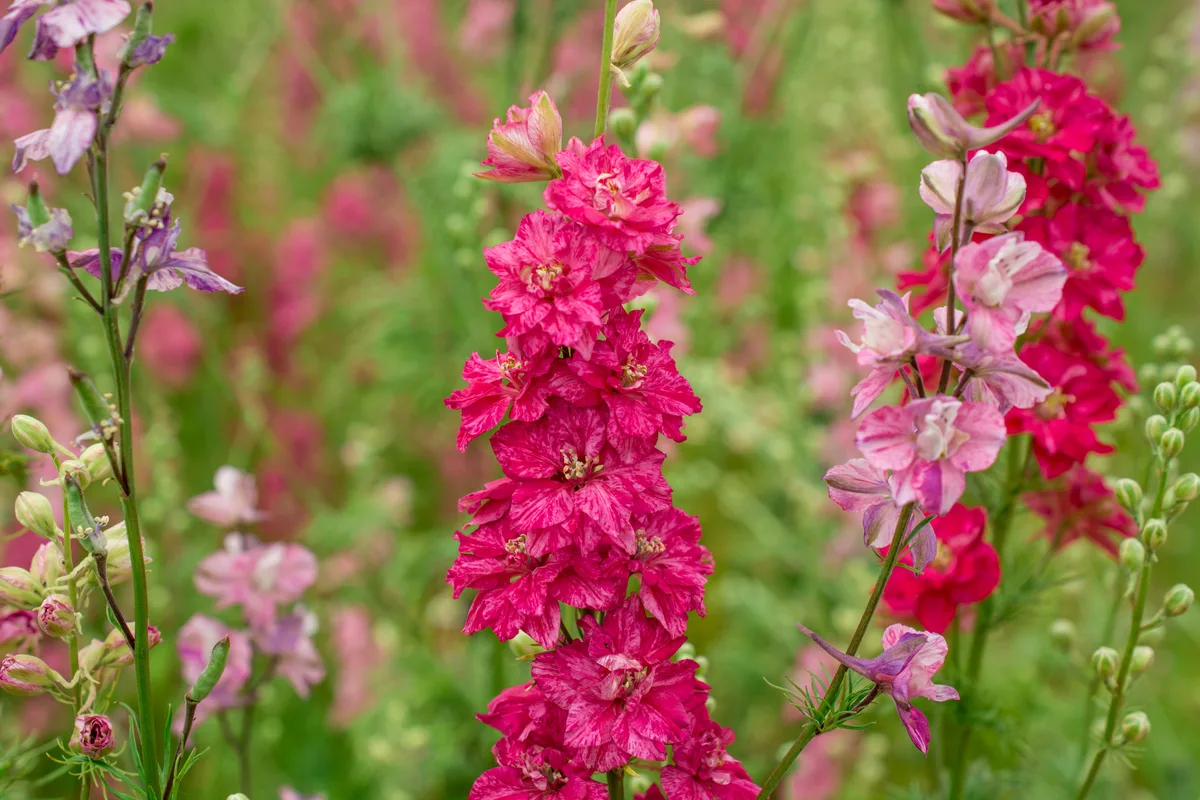
Stacked flowers whorl around skyscraper stalks in summer that reach 3 to 8 feet tall with colors of iridescent pale blue, vibrant pinks, and deep purples.
In zones 3 to 7, delphinium thrive in alkaline soils that are moist and fertile. Perfect for cottage gardens and the back of perennial borders in full sun.
31. Astilbe (Astilbe)
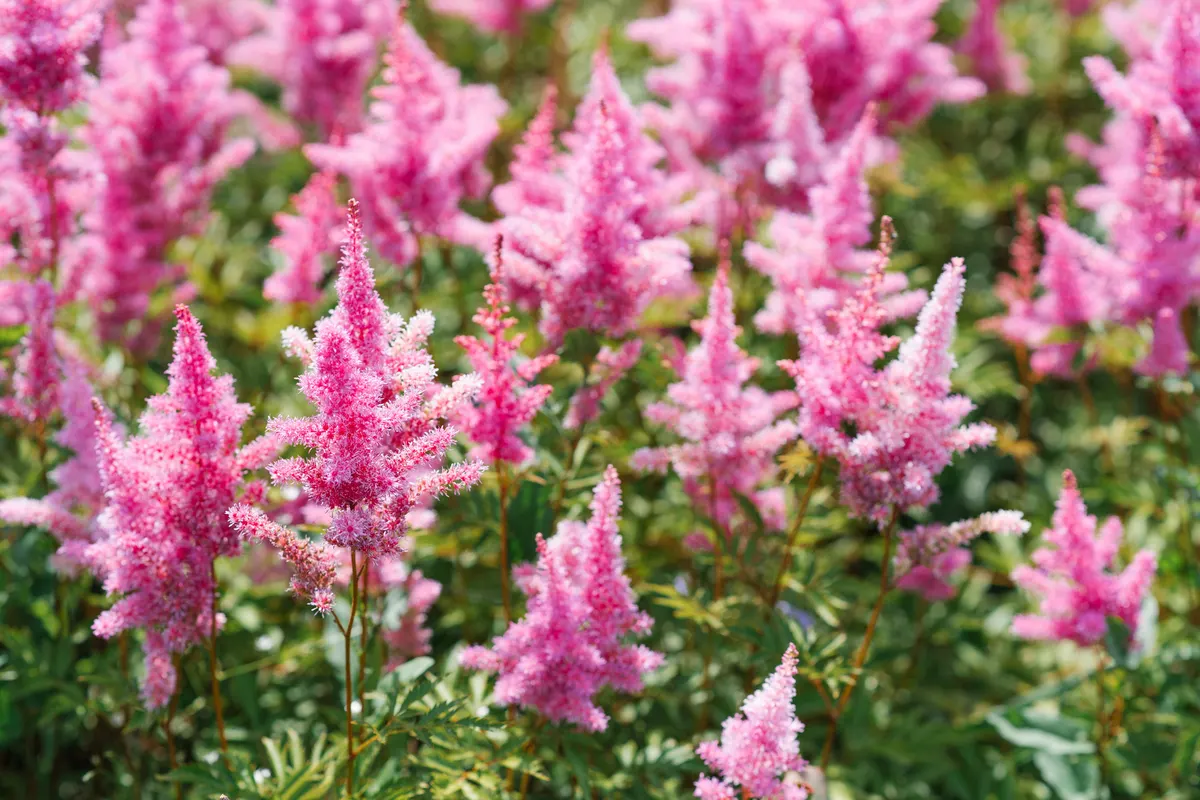
A colorful smaller version of Goatsbeard, colony forming 1 to 4 feet tall astilbe astound in feathery plumes of red, pink, and white throughout summer.
A lover of rain gardens in the shade, astilbe tolerate excess moisture, acidic soils and are hardy in zones 3 to 8.
Bonus: 5 Deer Resistant Bulbs
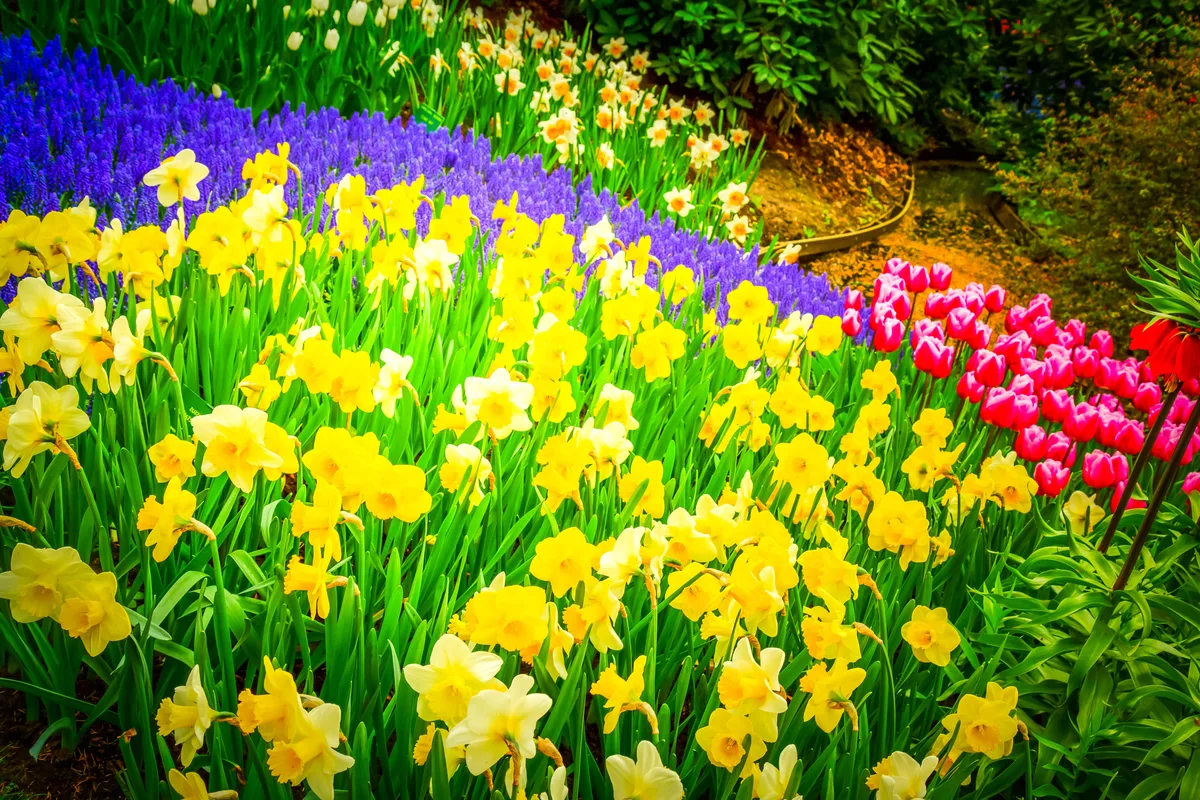
Mourn your decapitated tulips no more! I surround delicious (to deer) tulip bulbs with daffodils to keep deer away. Plus, spring blooming bulbs, like daffodils and crocus bloom early and are detested by deer. Deer cross these daffodil and crocus zones off their list when they are out scouting for food sources.
32. Daffodils (Narcissus)
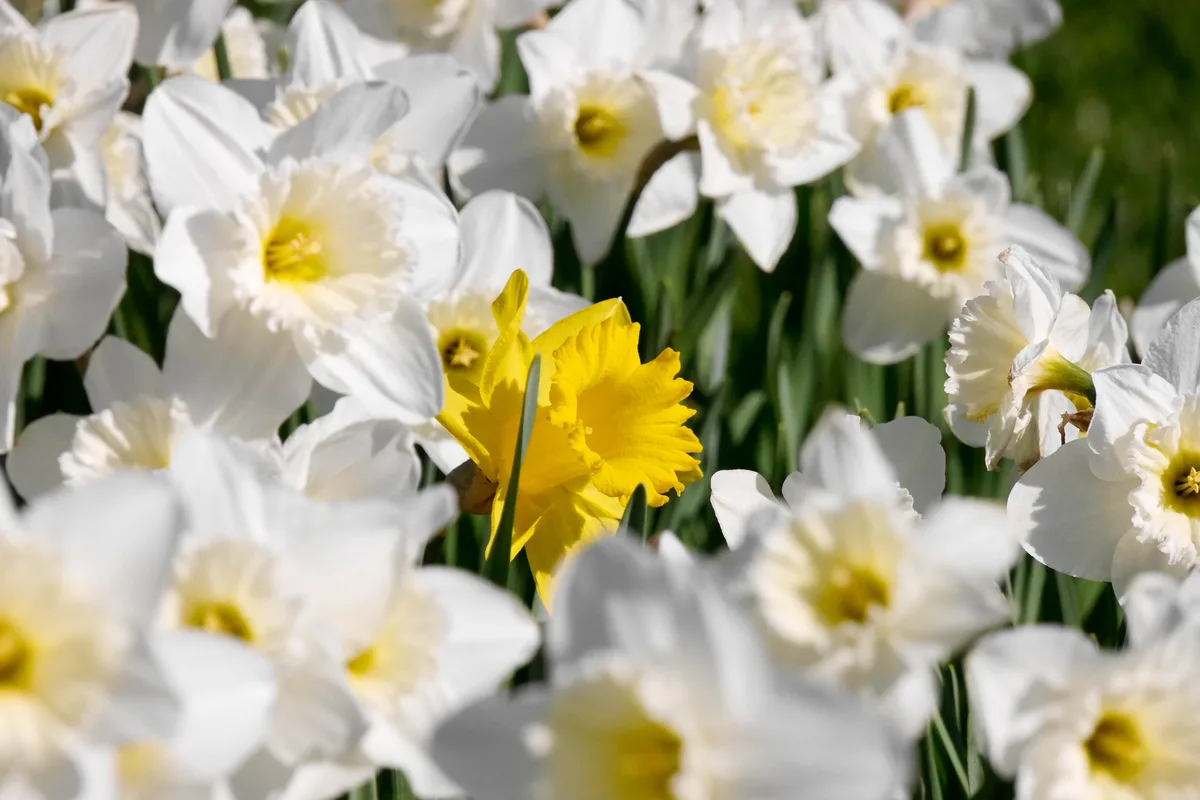
Hardy in zones 3 to 8 and blooming in colors of yellow, white, orange, and pink, spring-blooming daffodils are also toxic to deer!
33. Hyacinth (Hyacinthus orientalis)
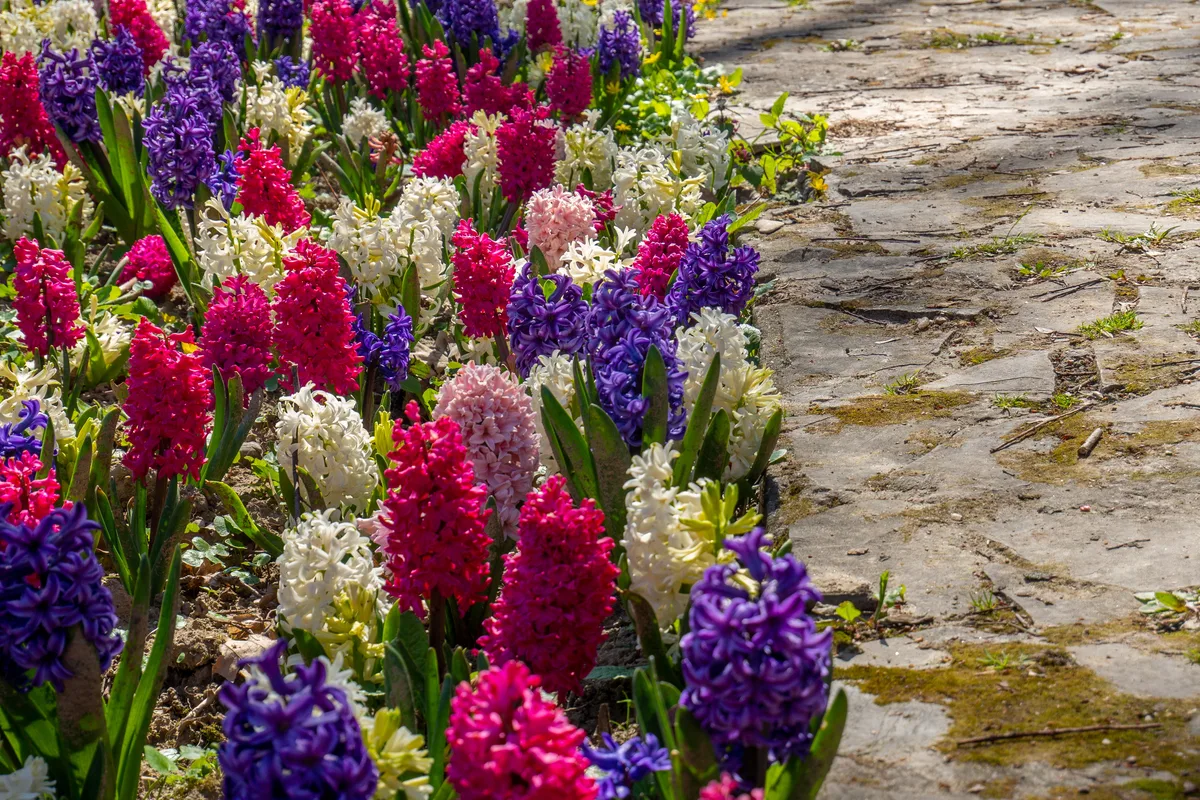
Deliciously fragrant, luxurious hyacinths bear clusters of bright white, yellow, pink, red, and purple flowers on short stems in zones 4 to 8.
34. Fritillaria (Fritillaria imperialis)
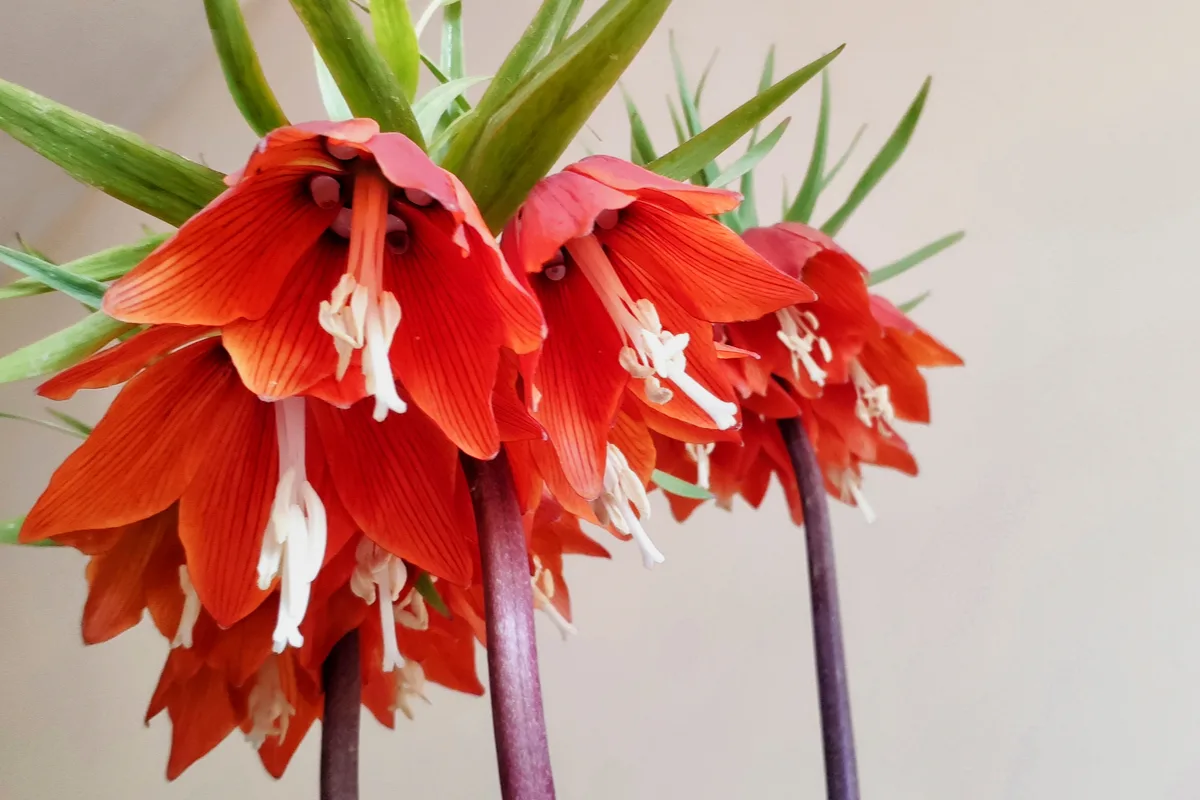
The red, orange, and yellow rings of bell-shaped flowers are exotic and outstandingly deer resistant in zones 5 to 8.
35. Ornamental Onion (Allium)
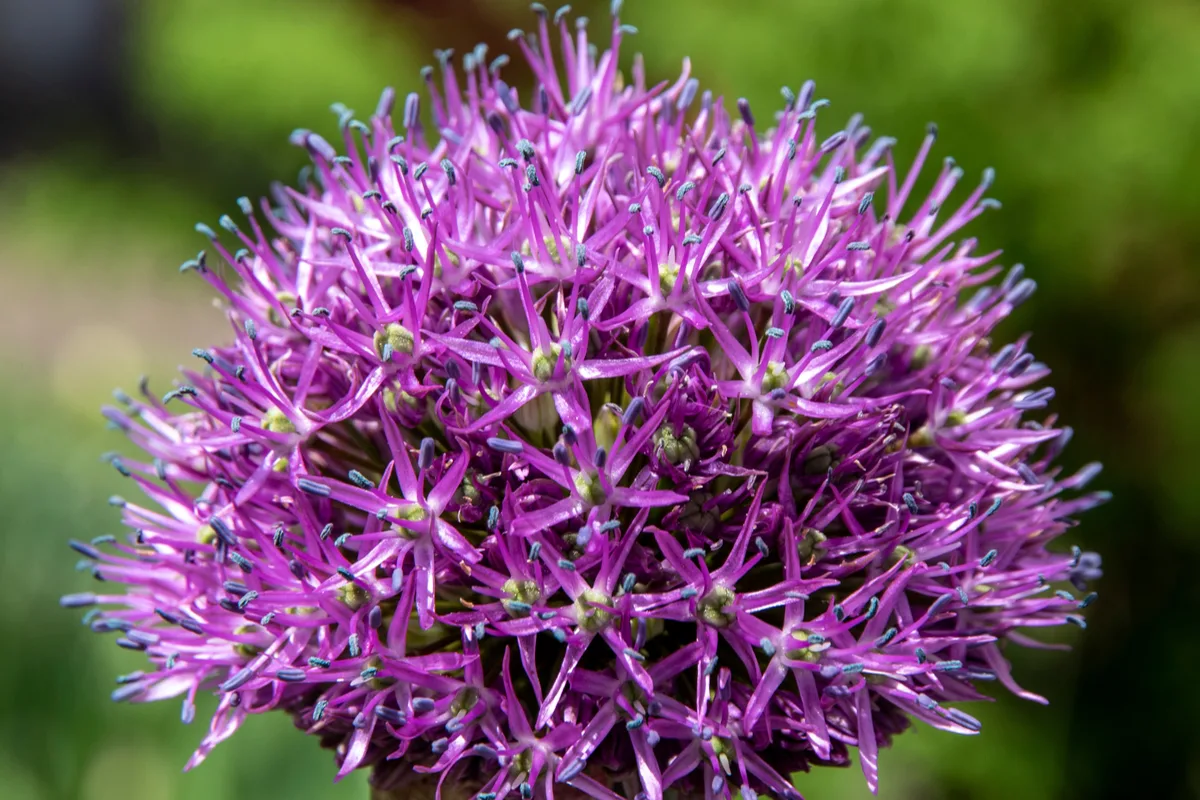
Gorgeous giant floating globes of white, rose, and purple rise above the garden scape in zones 4 to 10.
36. Crocus (Crocus)
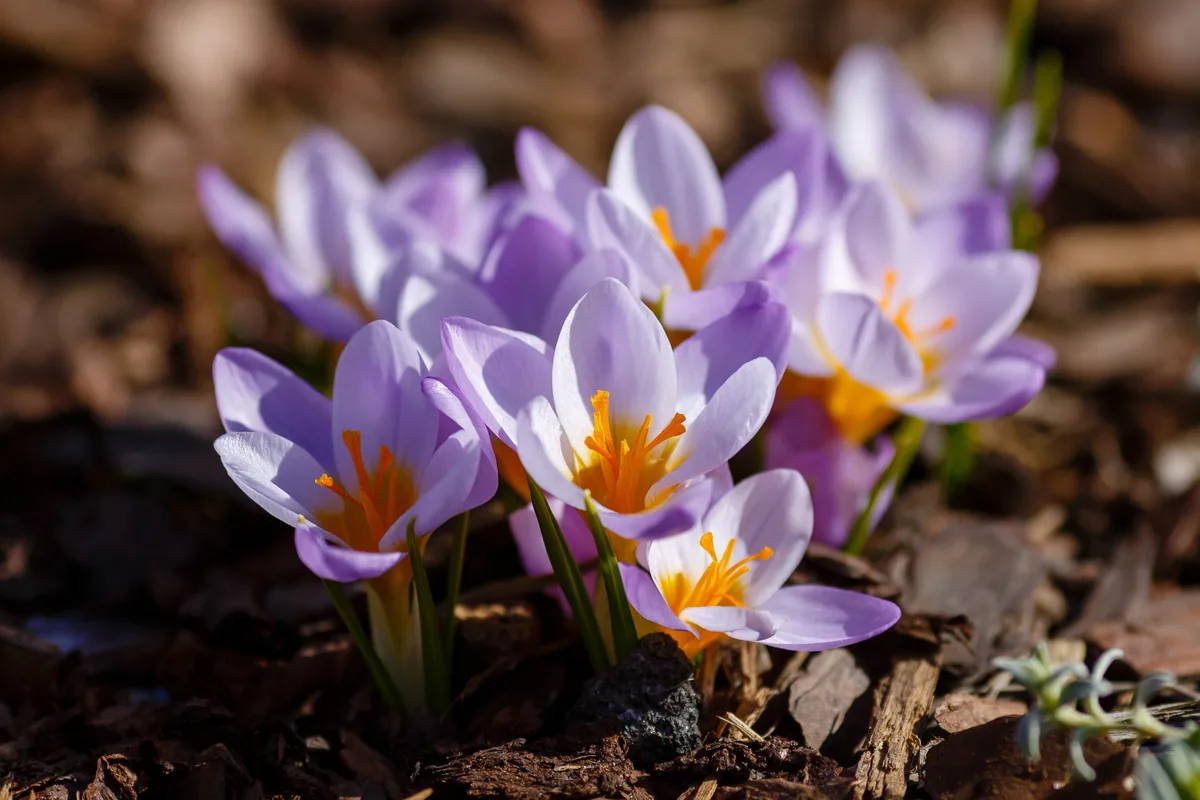
The earliest of spring blooming bulbs, crocus’ luminescent petals in complimenting or contrasting white, yellow, and purple thrive in zones 3 to 8.
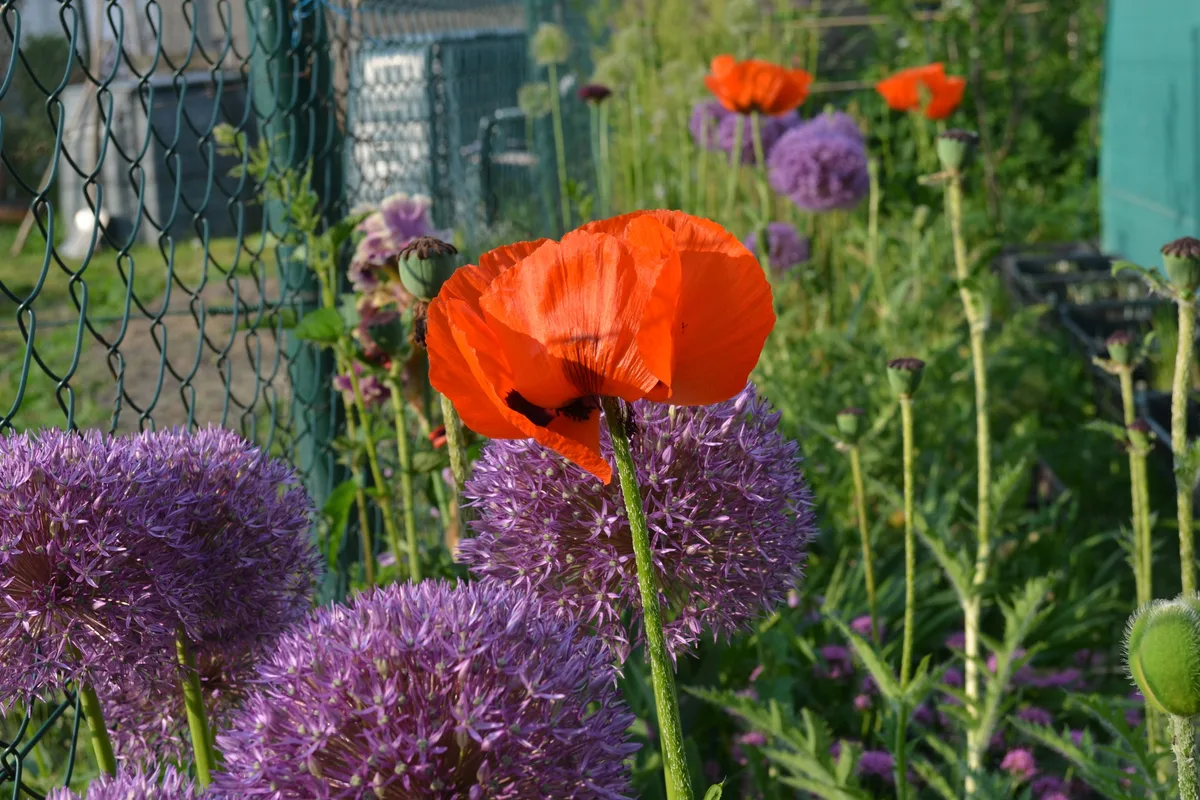
Persuade determined deer to avoid your gorgeous blooming backyard with deer resistant perennials!
